
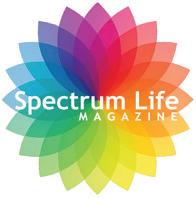




BELONG ART COMMUNITY
CONEXIONES EN LA COMUNIDAD
MASKING, MOTHERHOOD, AND GRIEF
EMPOWERING STUDENTS FOR SUCCESS
STANDING TOGETHER AGAINST BULLYING WHEN WORDS DIVIDE, HOW DO WE HEAL COMMUNITY?

FALL2025
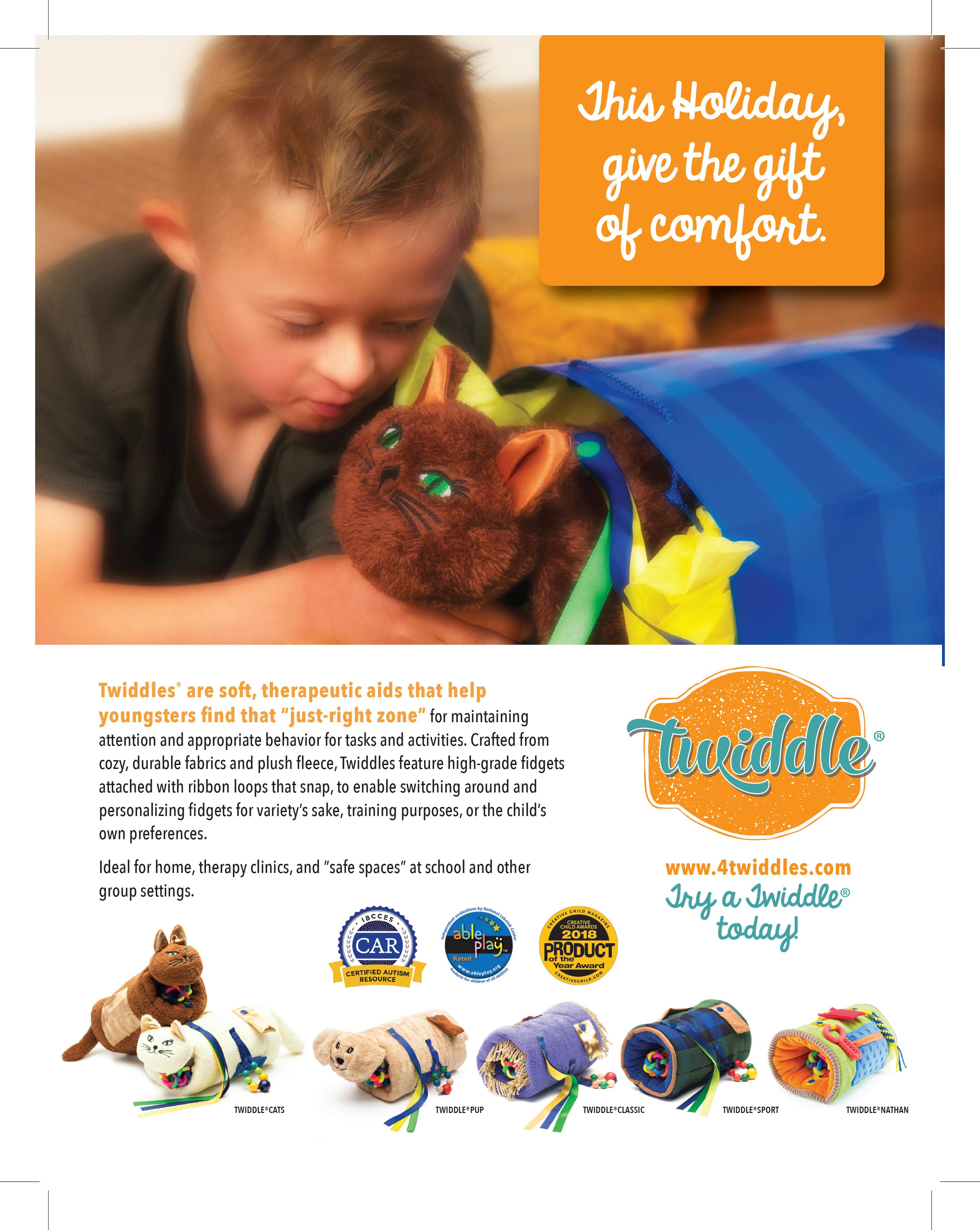
EMPLOYERS OVERLOAD: BUILDING INCLUSIVE FUTURES

FEATURED SECTIONS
Connections for our Community The Power of Language: It matters. 4 5 46 48
RECREATION
33 From the Publisher
Moving positively forward in all seasons of change.
Employers Overload Building inclusive futures through employment. 7 19 22 8 11 12 34 37 38
ADVOCACY
Conexiones en la Comunidad con Tanya Connections for Spanish-speaking families.
Why Accommodated Living Makes Sense for Me
Finding the balance between support and independence.
Chosen for this Exact Time
In this broken world, you still have purpose.
Are Employers Doing Us Dirty?
Rented for The Rat Race.
LIFESPAN
Belong Art Community Where housing, creativity, and inclusion come together.
Masking, Motherhood, and Grief:
My story of Autism and Alcohol.
Upcoming Autism Empowerment Activities Creation, Compassion, Connection, Community.
The AE-NCC Creators Corner Updates and opportunities from AE’s Neurodivergent Creators Collective.
EDUCATION
Spectrum of Learning Word Search
Discover words that celebrate National Learning Disabilities Month.
Empowering Students for Success
Parents and teachers positively partnering together.
Executive Function Skills
The missing link in student success.
HEALTH + WELLNESS
Why Functional Movement Matters
Standing Together Against Bullying Harnessing hope, understanding, and action. 44
Movement as a pathway to freedom and possibility.
Ask Spectrum Life: When Words Divide When words divide, how do we heal community?
NeuroQueer Intersections and Why Normal Is a Lie
The Two Closets: What coming out as Autistic and Queer taught me.
THERAPY
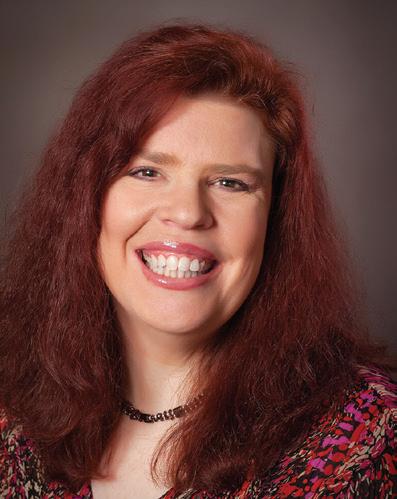

Welcome to the Fall 2025 edition of Spectrum Life Magazine!
As the leaves change colors and we step into a new season, we’re reminded that change is a constant in life. At Autism Empowerment, we believe that every season, whether joyful or challenging, offers opportunities to grow, to connect, and to move forward with hope.
This issue begins in Connections for our Community (page 5), where we reflect on The Power of Language: It matters. Tanya English continues that spirit in Conexiones en la Comunidad (page 7), strengthening ties in our Spanish-speaking community with a new quarterly column entirely in Spanish.
In Why Accommodated Living Makes Sense for Me (page 8), Niko Boskovic shares the balance between support and independence, and then the poem Chosen for this Exact Time (page 11) reminds us that even in a broken world, each of us has purpose. We also take an honest look at workplace realities in Are Employers Doing Us Dirty? (page 12), leading into our featured cover story, Employers Overload: Building Inclusive Futures (page 26).
Across the lifespan, Belong Art Community (page 19) highlights inclusion through housing and creativity, while Masking, Motherhood, and Grief (page 22) offers a vulnerable and personal story of autism and alcohol.
Recreation and creativity shine through in The AE-NCC Creators Corner (page 34), celebrating opportunities for neurodivergent creatives in our community. Education remains central, with a Spectrum of Learning Word Search (page 37), strategies for Empowering Students for Success (page 38), and the often-overlooked role of Executive Function Skills (page 40).
In Health and Wellness, Why Functional Movement Matters (page 44) explores movement as freedom, while Ask Spectrum Life: When Words Divide (page 46) calls us toward healing. In NeuroQueer Intersections (page 48), we examine identity, authenticity, and the myth of “normal.”
Finally, this season’s Therapy section offers action and hope in Standing Together Against Bullying (page 53).
Through every article, we invite you to embrace positivity, purpose, and connection. Whatever season you are in, may these stories encourage you. You are valued, you are loved, and your voice belongs here.
With grace and gratitude,

Karen Krejcha
Executive Director & Co-Founder: Autism Empowerment™
Editor: Spectrum Life Magazine™


SPECTRUM LIFE MAGAZINE TM A program of Autism Empowerment TM
Karen Krejcha, Autism Empowerment, Publisher
Dave Born, Graphic Designer
Editorial Advisory Board:
Aaron Blackwelder
Amy Donaldson, Ph.D, CCC-SLP
Laurie Drapela, Ph.D
Tanya English
John Krejcha
Ryan Krejcha Anson Service, Psy.D, LMHC
Brian Tashima
Mailing address: Autism Empowerment P. O. Box 871676 Vancouver, WA 98687 (360) 852-8369 www.AutismEmpowerment.org spectrumlife@autismempowerment.org
Autism Empowerment is a 501(c)3 nonprofit devoted to promoting a culture of acceptance and empowerment for children, teens, adults and families within Autism and Neurodivergent communities.
Autism Empowerment makes no warranty, guarantee, endorsement or promotion of any service provider or therapy option listed in this publication or our websites: AutismEmpowerment.org and SpectrumLife.org. This is a free community magazine created as a courtesy to the public. Autism Empowerment cannot be held liable for any action or decision based upon information found in this publication or our websites. It is the responsibility of individuals to discuss any therapy or treatment option with their care team. Every effort is made to ensure accuracy and verify information, however readers using this information do so at their own risk. No part of this publication may be reproduced or transmitted without prior written consent from the publisher, Autism Empowerment. © 2025 All rights reserved.
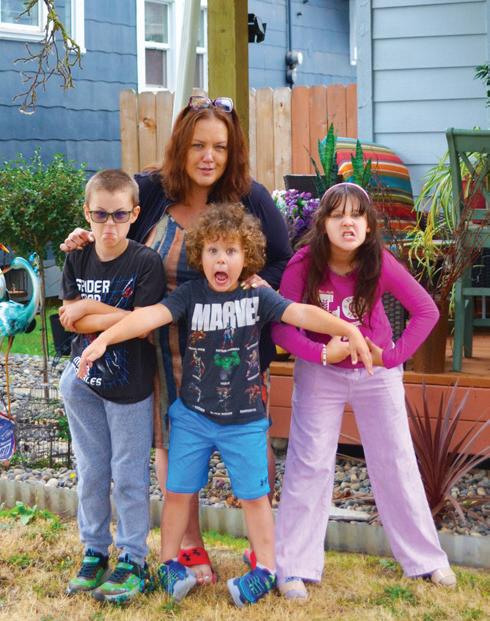
Rosemary Boyles from Employers Overload enjoys fall fun with her grandchildren. See our cover story on page 26.
www.
By John Krejcha
For many years in our nation, there has been a divide within autism and neurodivergent communities. Some might even question if a truly united autism community is possible.
Too often, conversations center around a competition of suffering—who has the greatest pain, who deserves the most government funding, who should or shouldn’t receive services, and even debates over how people choose to identify themselves (identity-first vs. people-first).
We also face increasing misinformation from government sources that use hurtful language to describe autistic people and their families, ignore sound medical advice, and deepen these divides.
Some people want to assign blame for a diagnosis, others chase “causes” that aren’t truly causes. Some want to burn down systems, while others isolate themselves in silos. But none of this divisiveness will move us toward full Autism and Autistic Acceptance, which I wrote about in Spectrum Life’s Summer 2025 issue.
At Autism Empowerment, we have always had a mission to build bridges and share a message of positivity—to build people up and empower them to live their best, most awesome, and authentic lives.
What that looks like for each person will uniquely differ based on their life experiences and individual goals. As a nonprofit and as neurodivergent representatives of Autism Empowerment, we are willing to have tough conversations, as long as they are done in a respectful manner and not overshadowed by doom and gloom, because that is how we see positive steps and real progress moving forward.
We are not talking about “Pollyanna” pie-in-the-sky thinking, kittens and rainbows. We are talking about having meaningful and real conversations that are grounded in mutual respect, dignity, and an effort to put ourselves in one another’s shoes. Our strength and power come from shared experiences, shared knowledge, and knowing we are not walking alone.
Language matters and it is important not only what we say but how we say it. When we choose to love our neighbor (all people—not just those who live next door), when we promote joy over negativity, we build peace. We nurture patience and understanding, in turn resulting in treating each other with goodness and kindness. And in doing so, we help encourage and create a more gentle and compassionate world.
If you have read Spectrum Life Magazine before or follow Autism Empowerment, you know we often talk a lot about our Four Foundational Pillars. Words and language build culture, and these pillars guide everything we do:
Accept - Promoting unconditional acceptance, respect, and the dignity of autistic and neurodivergent individuals and their families.
Enrich - Offering programs, services, and community connections that enrich lives through support, education, and meaningful opportunities.
Inspire - Sharing stories, resources, and positive role models that inspire hope, encouragement, and a vision for what is possible.
Empower - Equipping individuals and families with tools, resources, and support to empower them to embrace their strengths, advocate for themselves, and thrive.
Know this: you are not alone. You are seen. You are worthy of living your best possible life. We will keep spreading an uplifting message of encouragement and support, because you have an ally in Autism Empowerment.


Bienvenidos al primer espacio de Conexiones en la Comunidad en español de la revista Spectrum Life.
Cuando surgió esta emocionante oportunidad de crear un lugar dedicado a compartir información con nuestra comunidad hispanohablante, sentí tanta alegría y se me ocurrieron tantos temas y recursos que fue difícil escoger solo uno. Pero, para no terminar llenando toda la revista, aquí vamos a intentarlo.
Primeramente, quiero presentarme. Mi nombre es Tanya English, soy madre de un adulto y de dos adolescentes. Dos de mis hijos son autistas y, en noviembre, cumpliré un año desde mi propio diagnóstico.
Después de tantos años siendo madre de hijos autistas, descubrí que yo también lo soy. Sé que en nuestra comunidad el conocimiento sobre el autismo todavía es emergente, pero también sé que existe un gran interés en aprender más.
Por eso, además de iniciar este espacio en la revista, estamos planeando próximamente un lugar donde ofrecer a las familias educación e información sobre el espectro autista en español.
También tengo el honor de facilitar un grupo en español, como parte de mi labor apoyando a familias con hijos con discapacidades intelectuales y/o del desarrollo en la organización PEACE NW
Este grupo está abierto a padres, madres, hermanos y familiares que cuidan de alguien con una discapacidad (incluyendo el autismo). Es un espacio donde las familias comparten experiencias, se desahogan, ríen y, lo más importante, construyen comunidad.
La comunidad es el tema que quisiera cubrir porque es uno de los recursos más valiosos, especialmente en tiempos de incertidumbre y temor. Por eso quiero mencionar algunos recursos en español que conozco y que, además de brindar apoyo, también son una forma de conectarse con otras familias y formar comunidad:
En la escuela
La mayoría de los distritos escolares en nuestro condado cuentan con un Coordinador de Recursos Familiares y de la Comunidad (FCRC). Algunos hablan español y, si no, pueden conectarlo con un coordinador de enlace familiar en su idioma. En algunos distritos, estos coordinadores también facilitan grupos o comités de padres.
En la comunidad
Algunas de estas organizaciones son latinas, otras no, pero ofrecen apoyo en español. Varias son específicas al tema de la discapacidad y otras en el apoyo general a la comunidad latina.
Algunos ejemplos son:
• Pasitos Gigantes: https://pasitosgigantes.org
• Asociación de Autismo de Oregón: https://autismsocietyoregon.org
• Akin: https://akinfamily.org
• Autism Empowerment: www.autismempowerment.org
• Latino Community Resource Group o grupo de recursos de la comunidad latina: https://www.lcrgwa.org
• Liga de Ciudadanos Latinoamericanos Unidos o LULAC por sus siglas en inglés: https://lulacvancouver.org
• Latino Leadership Northwest o Liderazgo latino del noroeste: https://latinoleadershipnw.org
• Comunidad de Salud Responsable del Suroeste de Washington o SWACH por sus siglas en inglés: https://www.southwestach.org
• Personas empoderadas y comunidades realzadas del noroeste o PEACE NW por sus siglas en inglés: https://www.peacenw.org/recursos.
En redes sociales y medios de información
Aquí comparto algunos espacios donde puede obtener información en su idioma e incluso interactuar con otras familias:
En Facebook:
• PNW Latina Moms
• Caminemos Juntos Washington
En YouTube:
• Latino Leadership Northwest: @latinoleadershipnorthwest
• Understood.org: @UnderstoodOrg
• American Academy of Pediatrics: @AAP
Estos son solo algunos de los recursos que me vienen a la mente, pero sé que hay muchos más. Si usted pertenece a un grupo o conoce de un recurso que podamos compartir en este espacio, no dude en escribirme a: tanya@autismempowerment.org
Y recuerde:
• La comunidad la construimos juntos: podemos buscar apoyo, dar apoyo o incluso crearlo.
• Si no existe el grupo que necesita, usted mismo puede formarlo; lo importante es saber que nunca estamos solos.
• Cada conexión cuenta: buscar, compartir y crear comunidad está en nuestras manos.
¡Hasta la próxima!

Tanya English nació en Los Angeles, California, pero creció en Tijuana, México. Reside en Vancouver, Washington desde el 2014. Es una persona bilingüe y bicultural con autismo y con un fuerte sentido de justicia. Como coordinadora de la Coalición de Padres del Condado de Clark en PEACE NW y miembro de la junta directiva de Autism Empowerment, Tanya trabaja estrechamente con familias e individuos, ayudándolos a conectarse con recursos en la comunidad y a navegar sistemas complejos. Cree que las comunidades sólidas y solidarias fomentan familias saludables y así, las familias saludables pueden empoderar a los demás a prosperar.
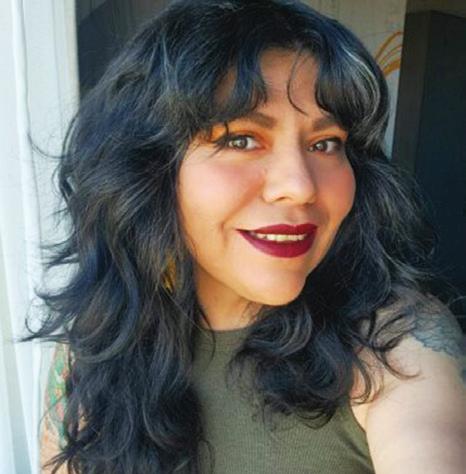


By Niko
For the longest time, I have gone back and forth between my parents’ houses. This setup is familiar to anyone whose parents no longer live together. I have routines that I do at each place, but my mom’s house has a basement that is finished and is where I stay when I am with her. I really like that apartment-like setup, and our plan is for me to start staying there permanently within the next year.
It may seem odd or childish for a man in his twenties to want to live in his mother’s basement apartment. Our society values and expects that young people who finish high school will go off to live in their own place within a few years. On the other hand, disabled people often have fewer choices for independent living besides their family’s home or a group home setting.
I want to have a different approach to my living situation, and would like to try “accommodated living” for a change. This means that I live in unison with my family, and other times I live with a direct support professional (DSP) who comes into my home. I have a break from my family, and they get a break from me.
There is nothing wrong with acknowledging that caregiving is hard work. The truth is that caregiving can be exhausting, low-paying work that parents usually provide to young children without compensation.
Furthermore, there is an expectation that parents—particularly mothers—will cover those extra needs. When COVID hit, the federal government allowed some parent caregivers to start getting paid because home health workers and personal support workers (PSWs) were in such short supply.
That program was discontinued in Oregon in 2022, but parent advocates worked to get legislation passed to continue paying a smaller pool of family caregivers to support their children. That hard-won legislation didn’t get expanded to include more families in this year’s legislative session.
Back to the concept of accommodated living... There is a goal that is placed on many disabled people like a long-distance prize: independence
Living on our own, working with minimal supports (or better yet, no longer needing anything “special” to do our work), and getting around without supervision are really important outcomes in all of our lives.
However, it is important to understand that really, no one lives without relying on other people for community,
Continued on next page
resources, and protection. No one can be nurtured in isolation. We are each social creatures with various capacities for connecting with others.
I used to resent having to go back and forth between my parents’ houses because it made me feel like property, but I knew that each of my parents needed downtime from caregiving because they are humans with their own interests and passions which are important to them.
In the same vein of thinking, I also have things that I like to do that I wouldn’t mind doing with other people. We autistic people who are labeled as “high needs” are always around the same people, and it gets old, I tell you. With new people come new experiences, and even routine-loving autistics need a shake-up from time to time.
I have found, after having been supported by PSWs and DSPs for many years, that those who like to share their interests and music with me are usually the ones with whom I feel more encouraged to stretch myself.
I have a DSP who is trying to letterboard (and is doing great) and like me, loves to be in the forest on a hike every chance he gets. That connection means a lot to me, and we are enjoying our time together. I trust him because he has earned my trust through the respect he has shown me and my family.
You often hope that the people who go into this work want to connect disabled people to the things that are important to them; that they are doing it as a way to change society’s perceptions about disability.
PSWs and DSPs are really important to the fight for autonomy because if they don’t accept that you have a right to lead a self-directed life, you can be sure that their attitude will stifle opportunities just like that.
The unfortunate truth is that the people in one’s life who are paid to give you support don’t get paid enough to do “the extras.”
They may not be willing to learn how to use your AAC device because it’s a pain. They may resent having to learn a new way to see you beyond someone who is nonspeaking. They may not appreciate being encouraged to be proactive in planning activities. I could go on and on. So it’s probably no surprise that the role of the DSP is so important to my

goal of being autonomous in where I live.
The other important piece is feeling empowered to make decisions that shake things up. For example, I wanted to stop going back and forth between my parents’ houses and told them during a virtual meeting with our behavior consultant, so that we could talk about it together. It was added to my person-centered plan as a goal, and now it is really happening.
The next step will be equally challenging: finding a way to staff it. I only know one person who is set up in this style of accommodated living, so if there are people in Oregon attempting the same type of thing, please share what’s worked well for you, what has been a challenge, and if there are resources that were especially helpful

Having the time to get it figured out is a privilege some might not share, and perhaps it will fall apart, but I’m glad to know my family will try to make it happen. The role of caregiver will never stop for my parents, but it’s time for them to move into the background and let other people support me in their own ways and share their interests with me.
It’s a part of my person-centered plan that I keep working towards typing on my own so that I can communicate without needing a communication regulation partner (CRP), so we continue to practice every day we are together.
I am learning to cook things. I want to be alone in my home. I want to be myself in my own safe space.
Navigating with Niko is part of a regular series at Autism Empowerment and Spectrum Life Magazine by Niko Boskovic.
To read past and future articles, visit www.spectrumlife.org/navigatingwithniko
Niko Boskovic is a 24-year-old autistic adult from North Portland, Oregon who uses a letterboard to communicate, advocate and share his passions and ideas. He graduated in 2019 with an Oregon high school diploma and currently takes classes at Portland Community College. Niko is passionate about poetry, nature, family, and disability justice and is very pleased to be able to share his thoughts and experiences with youth, adults and families in autism communities through his monthly blog at Autism Empowerment and Spectrum Life, Navigating with Niko. Connect with Niko on Facebook: NikoBoskovicPDX





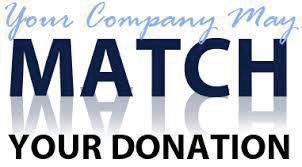




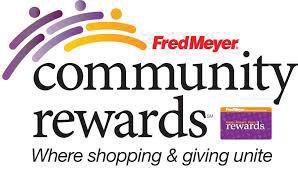

Other Ways
To Make an IMPACT!
Financial Gifts (including cash, stock, crypto, DAFs, etc.) support Autism Empowerment’s programs and structure This is an impactful way to help us build capacity and support nonprofit programs like Spectrum Life Magazine Thank you for your support! www.autismempowerment.org/donate
Honorarium, Memorial Giving & Endowments - Autism Empowerment offers the option for you to make a tax-deductible gift in honor or in memory of a loved one This is a wonderful and respectful way to honor someone special in your life We also have the capacity to accept endowments Please inquire
Start a Facebook Fundraiser for your birthday or another occasion Ask your friends and family to support Autism Empowerment in an easy and feel-good way Win-win! Set up a fundraiser: www.facebook.com/fund/autismempowerment
Employee Matching Gifts - Thousands of employers match charitable donations made to our organization at NO cost to you (other than your donation) Please check with your Human Resources Department for details
eBay Giving Works & PayPal Giving Fund - Support Autism Empowerment anytime you shop or sell at eBay See our listings Visit: ebay.to/1lCaFKm or givingworks.ebay.com/charity-auctions/charity/autism-empowerment/50668
Humble Bundle - Humble Bundle sells games, books, software, and more at discounted prices where EVERY purchase supports charity! Choose Autism Empowerment at www.humblebundle.com
Billy Footwear offers fashionable, adaptive, easy-to-wear shoes with a universal design When you order through our link, we earn a percentage of every purchase https://billyfootwear.com/?ref=AUTISM EMPOWERMENT
AE Amazon Wish List - Help fulfill our list! https://bit.ly/AEAmazonwishlist Amazon Shopping - Autism Empowerment receives affiliate income when you shop through our link: https://amzn.to/429XLgO
Fred Meyer Rewards Card - Support AE every time you shop at Fred Meyer. This doesn’t cost anything. Just sign up and shop. Autism Empowerment’s number is WA330. www.fredmeyer.com/i/community/community-rewards
Vehicle Donation - Support Autism Empowerment with your donation of a vehicle (running or not). bit.ly/autismvehicle or get more information on our website: www.autismempowerment.org/get-involved/ways-give/donate-vehicle
Volunteer! Be a Social Media Ambassador and share our content Join our fundraising or thank you committee www.spectrumlife.org/impact
Please visit AutismEmpowerment.org to learn more. We are a 501(c)3 nonprofit. #45-2455219
www AutismEmpowerment org/get-involved/ways-give
Email: Donations@AutismEmpowerment.org or call (360) 852-8369 with any questions.
chosen for this exact time By
Karen Krejcha

You have been chosen For this exact time. Assigned from the beginning, By the one so Divine.
You’ve been given a calling, A purpose, a mission. To reflect kindness and goodness Through a love and peace vision.
Not everyone will get What you’re doing. Sometimes you’ll forget What you’re pursuing.
Humanity is fallible And in this broken world, Screens keep on scrolling While arguments are hurled.
You ask why, oh why Can’t we all come together? Please open their eyes Create a change in this weather.
But even the well-intentioned Get divisive and tethered. And sometimes it seems Altogether too much.
Curiosity and discussion, Drowned out by percussion, Of the voices insisting Their opinions are right.
Whether naive or well-spoken, This society is broken. They see you as a token. You know they’re insincere.
Do they want you at the table? Would they listen if they were able? Have they heard of the stable? And the story of grace?
Fruits of the Spirit, They are falling. Off the trees, hear the calling. Even though this is not your world.
This is not your world, You feel out of place. Born on the wrong planet, A mask on your face.
You may not say the right words, If you can speak them at all. When your community is disparaged, You feel sad, you feel small.
People want you to change, Ignored until you comply. Insist on eye contact, But posing is a lie.
Imposter syndrome is real. You’re sensitive to rejection. Wanting to escape attention, You look for direction.
Yet still you are chosen, A light in the dark. Your steps may feel broken, But God sets the mark.
Stand firm in your purpose, Let His Spirit renew. The fruits you’ve been given Are blossoming through.
Accept who you are, Enrich where you stand, Inspire with your kindness, Empowered by His hand.
Karen Krejcha is co-founder of Autism Empowerment, where she serves as Executive Director. She is Editor of Spectrum Life Magazine, host of the Autism Empowerment Podcast and founder of Spectrum of Voices LLC. Karen was diagnosed on the autism spectrum in her 40s, after the diagnosis of her two children. She has been married to co-founder John Krejcha for over 33 years and is devoted to being a loving wife, mom, daughter, and ambassador of acceptance and empowerment worldwide. https://linktr.ee/karenkrejcha
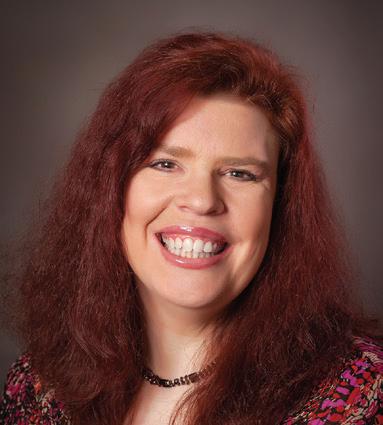
By Anson Service, aka Neurodivergent Doctor

I recently rented a vehicle to move some heavy equipment. I received the vehicle in good condition. It was full of fuel, and it was clean. When I was finished with it, I made sure the fuel was topped off and gave it a good cleaning so that I would return it in the same or better condition than I received it in.
I only rented it for the day, but was sure to return it in good condition, ready for the next day. Not only is this kindness, but it is also expected. Now, read this next part carefully:
Our employers are only renting us for the day.
In what condition are they returning you at the end of the day?
I ask certain clients the same question when they are experiencing chronic difficulties with their jobs due to undesirable or harmful work conditions.
It’s Monday morning. Ashley sits in her car, parked in the lot outside her office. She’s been sitting there for 12 minutes. She can see inside that the lights are bright, and she knows
that the phones are already ringing. She walks in and is greeted by the hum of the copy machine mingling with the smell of burnt coffee and reheated fish from someone’s lunch the day before.
She is already exhausted, and she hasn’t even clocked in yet. Last night she began to have stomach problems and just plain icky feelings from anxiety knowing she has to work today; an all too familiar experience for her.
Some don’t understand why she would feel nervous since she has worked there for three years and is an integral part of the company. Even though her job is to solve other people’s problems, there are hundreds of problems and challenges she faces almost daily just to get to work and stay there.
This morning was no exception. She woke up, showered, and dry heaved from extreme anxiety while getting ready. She didn’t feel like eating, but grabbed a yogurt out of the fridge on her way out anyway. She read that yogurt is good for the stomach, and she is willing to try anything.
Unfortunately, because of avoidant restrictive food intake disorder (ARFID), she will not be able to even think about eating the yogurt. It will sit in her hot car, and in a few days, she will throw it out after it bloats and threatens to explode hot, sour yogurt all over her floorboard. It’s happened before.
To her coworkers, the smells, the sounds, and the stress of Monday are a minor inconvenience or even a bit of a thrill. People may look forward to telling coworker friends about their weekend.
To Ashley, an autistic person also diagnosed with ADHD, with a hypersensitive sensory profile, her day is an avalanche of negative experiences before even pulling into the parking lot.
Two floors above her, Mike, who has ADHD, is already in his chair, leg bouncing, and pen tapping on his desk with a nice beat. He arrived “on time”, which means he was five minutes late, only because he didn’t get much sleep. You see, Mike takes stimulant medication for his ADHD symptoms, but he forgot to take his medication early enough the day before, so by the time he took his medication, it was later in the day.
That interfered with his sleep that night. He felt he needed the help from medication because he was working on a project that should have been turned in the Friday before. That hits close to home for me, as I am trying to catch up on writing this article for Spectrum Life Magazine that is already past due.
Continued on next page

Thankfully, I have wonderful and understanding editors, and they extended the deadline for me, knowing I am neurodivergent and would procrastinate finishing this article until the last moment. (Editor’s note: Us too, Anson. Us too.)
Mike was late to work because he hit his snooze button three times. In his mad dash to work, he forgot to eat breakfast and had to stop for a quick breakfast sandwich from the gas station on his way to the office. Ironically, Mike will run out of gas on his way home because he didn’t feel like he had time to pump gas while getting his sandwich.
It is important for Mike to eat breakfast, even though he doesn’t want to eat in the morning. However, if he doesn’t eat early, once he takes his ADHD medication, he won’t feel like eating lunch and will lose energy and become highly irritable by 3 PM.
He was supposed to arrive first in the morning to open the office, and people were waiting outside the office, irritated that Mike was late again; another failure he will remind himself about for months.
Now, settled in, he sits at his desk trying to focus on a long, confusing email thread with too many out-of-order replies about a project that isn’t due for another three weeks while the project that is due today hasn’t even been started.
Guess what... he forgot his lunch as well, and by noon, he will be so hungry he would eat a hot, bloated yogurt from the floorboard of someone’s car.
Ashley and Mike are examples of what millions of neurodivergent people experience almost daily.
These two aren’t “failing at work.” In fact, they are quite good at what they do.
However, they, along with millions of others, are being forced to operate in a system and environment designed with no consideration for their neurological realities.
As you’ll see in this article, the design of their jobs is not an accident; it’s a feature of a complex system most of us are forced to operate within. And while it may work for most workers, it most definitely does not work for the majority of the neurodivergent people I know and have worked with.
If you’re neurodivergent, you may have walked into an open-plan office, like Ashley and Mike’s work, and you may have immediately thought, “Oh, this place was clearly designed by someone who has never had to actually work here,” or “This place is a sensory nightmare.”
If you have ever worked in a warehouse doing monotonous, joint-killing, repetitious labor, you likely have thought that you are nothing more than a robot to them; a cog in the machine, and maybe worth less than the deafening machines around you. You believe they would replace you within a millisecond if they could. Many feel like they are selling a piece of their soul with every day they work in these environments.
The modern workplace, with its schedules, lighting, expectations, tricky time-off and vacation rules, and even its break policies, is a carefully designed product of a 200-year-old economic experiment. Unfortunately, it’s an experiment that is optimized for machines and profit, not human brains and experiences (Thompson, 1967).
Now imagine stepping into that system with an ADHD brain that processes the concept of time differently, even artistically, like that Salvador Dalí painting where the clock is melting and distorted.
What if you are autistic with a sensory profile that cannot ignore the nausea-inducing humming of the copy machine, or the migraine birthing fluorescent or ultra-bright LED lights?
What if you have debilitating anxiety, and talking to people keeps you in a state of constant “fight or flight”? What if you are so depressed that getting out of bed is the worst possible thing you can imagine doing that morning, but you must or you will be fired?
What if your finances are so tight that missing even an afternoon to go to a doctor’s appointment would ruin your monthly budget? Unfortunately, this is the reality for millions of neurodivergent employees every day.
Some might think in a snarky tone... “Oh, well I am sorry your full-time job isn’t cushy and comfortable for you. Call a wahhmbulance!” But it’s not just about “comfort.”
Continued on page 14

These conditions directly affect productivity, performance, and well-being, which also affects the employee’s ability to make an adequate living.
Employers who fail to understand this aren’t just missing a chance to be “nice”; they’re actively undermining their own workforce, their own profits, but most importantly, another human being.
The Rat Race—A Daily Triathlon of a Neurodivergent Life
A couple of years ago, I was asked by Spectrum Life Magazine to tell them and readers like you what a day in my life was like.
I live a very busy lifestyle. This is not a good thing. I do not take days off from work, family work, or volunteering. I heard from others that they don’t know how I do it... all of the things... all day long, without breaks, without what self-care might look like to others.
The truth is... I can’t stop. I can’t stop “doing” or I become highly uncomfortable and agitated. Body movement is stimulating and regulating for me. I cannot sit still for long. Having something worthwhile to work on is satisfying to me.
I cannot simply sit and do or think nothing.
I also noticed that some people confuse my constantly being on the go with high productivity. One does not necessarily correlate with the other. Even though I have to stay on the go, what I do is not always productive, and sometimes it is even counterproductive, setting me back hours or days, sometimes costing me a great deal of money.
I consider it part of the ADHD tax that I am constantly paying; acting before taking time to think things through, not reading or understanding the instructions, and just diving into a project with only an idea in my head of how it should go, and ultimately, it costs me time and money.
Not listening to someone because they talk too slowly for me often causes me problems later because I miss key points of information. Life is like a non-stop, never-ending triathlon
race for me that I cannot seem to win or lose... and I will be upfront with you about this... I am exhausted
I am getting better as I am learning to manage my ever-changing neurodivergence, but I still exhaust quickly.
When I was younger and full of energy, I could do all the active things, and they were fun. Even the failures were fun or at least stimulating to some degree.
Now I no longer have the abilities I once had for a variety of reasons. Some of it was caused through injury (some due to impulsive actions). Some was caused by aging. Some was caused through the long-term effects of various medications to try to control my brain better so that I could keep up with the expectations of others.
But I am still in this triathlon race, whether I like it or not. And I am not the only one. For many, the daily rat race looks a little like this:
For many neurodivergent employees, the workday begins in deficit. Getting to work might have already involved decision fatigue over clothing, textures, battling sensory overload in the shower or on public transportation, traffic stress, navigating unpredictable traffic patterns that spike anxiety, not being able to decide what to eat because we don’t want to eat anything, or the lingering effects of nighttime medica tions that help us sleep.
By the time many of us clock in when we get to work, we’ve already used a major chunk of our cognitive resources. Some days, I am already physically and emotionally exhausted by the time I pull into the office parking lot.
Open-plan offices were supposed to encourage collaboration, but I believe it was really to keep an eye on employees and to cut costs by not having to build out individual offices. Research suggests these kinds of workspaces actually decrease productivity and increase stress, especially for neurodivergent workers (De Croon et al., 2005).
Bright lights, the annoying tappity clacking of keyboards, talking across the room to others (crosstalk), overlapping conversations, and more, can trigger sensory overwhelm in autistic employees or disrupt attention in those with ADHD.
For other forms of neurodivergence, these can contribute to a special type of hell that a worker is often forced to endure at least 40 hours per week. And then there are the forced interactions with that “one office personality” that make us want to scream. These things all can contribute to burnout.
ADHD challenges in time management, task prioritization, and working memory aren’t “bad habits” but rather are neurological realities for many of us (Barkley, 2015).
In fact, as I am writing this, I am supposed to be working on
Continued on next page
psychological reports, which I don’t want to do right now. There is no dopamine for me in writing reports. Writing this article is my way of avoiding what I do not have the mental and physical energy for, even though I am late again with this article.
Some call it procrastination, but I call it accommodation.
If you are curious why I said writing reports drains me of physical energy, yet here I am writing this article at my desk anyway, yet it doesn’t drain me, it is because I want to write this and it energizes me and helps me feel a sense of accomplishment, even though it requires prolonged mental effort, which causes me to procrastinate.
There is a tug of war between my ADHD and Autism that is a constant battle, every day and every night.
However, I do get dopamine and other “feel-good” neurochemicals from this battle. It feels good to write. I need that feeling this morning because I have a full day of eight hours of counseling today, and that will wear me down by the end of the day, even though I love doing it.
When the workday ends for most people, they get to go home and do “home things”, such as meeting with friends for happy hour, cuddling up on the couch with a significant other, paying bills, gardening, etc.
For many neurodivergent people, the end of their work shift is just the beginning of the next shift, home. Daily living tasks such as grocery shopping, cooking, and paying bills demand executive functioning skills that we have already exhausted at work.
Our employer already consumed all of our fuel (executive functioning), and there is nothing left in the tank for us for the rest of the day. Autistic adults I work with often struggle with “adaptive functioning” in these tasks, not from lack of intelligence but from the cumulative effects of sensory load and planning fatigue.
Rest isn’t really rest for many neurodivergent people. It’s “catch-up”, and for many, it is an ongoing struggle that they seem never able to get ahead of. Even leisure time may be consumed by recovering from sensory and social exhaustion. And if you are in a job that constantly worries you, even when you’re at home or on vacation, do you ever really get a break or time off? No.
Even though your body is gone, your brain is still at work, and your body feels it. So, essentially, you are working overtime without pay or recognition. In short, your employer is not returning you in good condition at the end of the day.
Masking, which has been described as the act of camouflaging neurodivergent traits to pass as neurotypical, is one of the most energy-intensive activities in a neurodivergent person’s day (Holloway, 2022).
In a work context, masking might mean:
• Forcing eye contact even when it is uncomfortable or painful.
• Modulating tone of voice to match team norms.
• Suppressing stimming behaviors (self-soothing repetitive movements) to avoid judgment.
• Trying to match others’ demeanor, water cooler humor, or other acceptable or celebrated behaviors in the office.
• Trying to stay aware of office politics and office drama. SO MUCH DRAMA! Am I right?!
Masking helps people “fit in” but can also lead to burnout, depression, and even identity confusion over time (Holloway, 2022).

Before the Industrial Revolution, work was guided by seasonal patterns, daylight, and the variability of human needs. Farmers, artisans, and tradespeople often self-paced their labor.
Neurodivergence may not have been such a “problem” way back then because the work itself was more adaptable. Additionally, people typically had something to show for their hard day’s labor.
Much of the work we do now starts over the next day. Not much to show for a hard day of work, except starting over and doing it again the next day. This can feel defeating over time, which can disrupt our natural rhythm of work.
When we feel defeated, we begin to slow down, and performance suffers. Eventually, we find ourselves sending out resumes to find a different job, which often means doing the same style of work for a different company.
Continued on page 16
In the 18th and 19th centuries, factory owners needed labor that was synchronized to machines, production deadlines, and profit forecasts. They did not give the workers’ bodies much consideration. Schedules became rigid.
Punctuality was reframed as a moral virtue rather than a practical necessity (Thompson, 1967). The human worker was now a cog in a larger mechanical process.
By the mid-20th century, the modern corporate model added bureaucratic layers—Human Resources departments designed not to advocate for employees, but to protect companies from lawsuits (Kaufman, 2004).
Diversity became a buzzword; more of a checkbox, not a design principle. Workplaces remained standardized in ways that made neurodivergent inclusion an afterthought, if it was considered at all.
Over the course of tens of thousands of hours sitting and interviewing, and working with neurodivergent people who are employees, I have found that when they are forced to work in environments that do not fit them well, the results can be predicted as decreased productivity, higher turnover, and increased burnout. But the personal cost is far greater.
• Ethical Strain: Many neurodivergent individuals have a heightened moral compass and value authenticity (Chown, 2014). Being asked to mask or conform to unclear expectations can feel like an ethical compromise.
• Inconsistent Performance: This isn’t due to lack of effort but rather the result of cumulative sensory, executive, and emotional load.
Additionally, if a person grows up being constantly told they are doing things wrong (be still, quiet down, do better), when in fact they are doing the best they can, that can lead to second-guessing, overthinking, and inconsistent performance.
• Misinterpretation of Behavior: Company leaders profess that directness in communication is a strength, but I have found that with neurodivergent people, it is often interpreted as rudeness.
Requests for clarity may be misread as insubordination and challenging someone’s authority. A coworker once asked me why I didn’t show up to a special event they had been planning for months. I told them, “Well, at the time it just wasn’t that important to me.”
I didn’t mean to be offensive, and she often talked about the importance of being direct in our communication, but she took offense to exactly what she said she valued: direct communication. Really, she was likely upset that I didn’t care much about her fun work project, which she apparently took personally.
Another example is when a colleague presented a new minimally invasive test to identify Alzheimer’s disease. At the end of her demonstration, she opened up the time for comments, questions, or concerns about the test. I saw what I believed were some glaring flaws with the test, so I raised my hand to ask if they had considered those yet. She had no real answer for me. After the event, she refused to speak with me again, also turning three other colleagues against me for “calling them out”.
My final example is about a young autistic man who asked a nice girl to marry him. The girl’s father confronted the young man and complained that he did not call him to ask for his daughter’s hand in marriage before proposing. His response: “Well, it’s really not your decision to make.” While that was hard for the father to hear, one cannot argue with the young man’s logic.
For many of us, these types of experiences have been a lifelong challenge both in and outside of the workplace.
I require very direct communication. Talking in vague terms to me is the best way to be disappointed with what I do with the information (or lack thereof) given me. This has been a consistent thing I have struggled with throughout my life.
As a youth, I was a bored and thus mischievous young man. I sought out ways to entertain myself, which sometimes caused disruption. Leaders of my church often spoke to me in vague terms, which caused quite a bit of confusion for me.
One such incident that comes to mind was when a clergy leader, in a private, closed-door meeting, told me, “Young men who (insert some vague mischievous behavior here) are not worthy of attending (church summer camp)”.
At the time, I nodded my head and agreed with him. The problem was that I did not know he was referring to me and my behavior.
Later, it dawned on me that I was the one whom he was not permitting to go to youth camp. He should have just been upfront about it instead of speaking as if he were talking about other bored young men.
This problem persisted into adulthood. A colleague once told me, “When I am done with the testing computer, I like to put

it back in the file cabinet.” I agreed and told him that he was very thoughtful. I did not realize until two days later that he was really trying to tell me to put the computer back when I was done with it.
Additionally, neurodivergent people can misinterpret others as much as they misinterpret us. So, let’s all keep that in mind.
What Genuine Support and Stewardship by an Employer Looks Like
Employers can move from “tolerance” in words only, and false or weak “advocacy” to genuine stewardship by making evidence-based changes.
1. Create Sensory-Friendly Spaces
• Provide quiet work zones and noise-cancelling options.
• Use adjustable lighting; avoid unnecessary sensory clutter. Allow some individual control over lighting.
• Allow private offices when appropriate.
2. Allow Flexible Scheduling
• Let employees stagger hours or work remotely when possible.
• Recognize that focus and energy aren’t going to be consistent over an 8-hour block of time.
3. Make Communication Concrete
• Replace vague feedback (“be more professional”) with specific, actionable steps.
• Provide written agendas and clear deadlines.
4. Support Executive Function
• Offer project-management tools like Trello or Asana.
• Schedule regular, structured check-ins, rather than exhausting micromanagement.
5. Normalize Accommodations
• Frame adjustments as performance enablers for everyone.
• Train managers to ask, “What helps you do your best work?” and act on the answers.
6. Reduce Masking Pressure
• Encourage acceptance of different communication styles.
• Include neurodiversity education both with onboarding and periodically, as new information is constantly being discovered on this subject. Contact Autism Empowerment and Spectrum Life Magazine for information on training staff.
7. Rethink Performance Metrics
• Allow alternative demonstrations of competence, such as portfolios or project showcases, rather than in-person performances.
Designing workplaces for neurodivergent needs doesn’t just help neurodivergent employees; it helps everyone.
Quiet spaces benefit those with headaches and chronic pain. Clear communication reduces confusion for all employees and leads to more confidence daily. Flexible hours improve retention across demographics and show that the person is more important than the policy.
I know many neurodivergent employees who bring exceptional strengths to their places of employment, but these only emerge when the workplace doesn’t siphon off their cognitive, physical, and emotional resources for the sake of outdated norms just because “that’s how we’ve always done it”.
The industrial-era work model was built for compliance, not creativity. It now focuses on liability control and recordbreaking profits, not human thriving.
Employers who embrace support and stewardship over standardization will unlock the potential of their workforces and will stop seeing their employees as “resources,” but rather as whole human beings.
1. Barkley, R. A. (2015). Attention-deficit hyperactivity disorder: A handbook for diagnosis and treatment (4th ed.). Guilford Press.
2. Chown, N. (2014). More on the ontological status of autism and double empathy. Disability & Society, 29(10), 1672–1676. https://doi.org/10.1080/09687599.2014.949622
3. De Croon, E. M., Sluiter, J. K., Kuijer, P. P., & Frings-Dresen, M. H. (2005). The effect of office concepts on worker health and performance: A systematic review of the literature. Ergonomics, 48(2), 119–134. https://doi.org/10.1080/00140130512331319409
4. Holloway, Phyllis Elizabeth, “The Price Of “Normal”: Masking In The Autistic Community (2022). Online Theses and Dissertations. 730. https://encompass.eku.edu/etd/730
5. Kaufman, B. E. (2004). Theoretical perspectives on work and the employment relationship. Industrial Relations Research Association. https://bit.ly/theoreticalapproaches
6. Thompson, E. P. (1967). Time, work-discipline, and industrial capitalism. Past & Present, 38(1), 56–97. https://doi.org/10.1093/past/38.1.56
To read other columns by Dr. Service, visit: www.SpectrumLife.org/neurodivergentdoctor
Visit his educational YouTube channel at www.youtube.com/@NeurodivergentDoctor
Dr. Anson Service is a licensed mental health counselor, and part of a team that assesses individuals for autism, ADHD, and more at Adventure Psychological Services. Dr. Service has written for various magazines and authored several books and is happy to further educate others on autism and other areas of neurodiversity. He and his wife have raised three young men and are now raising their dog, Luna. www.NeurodivergentDoctor.com
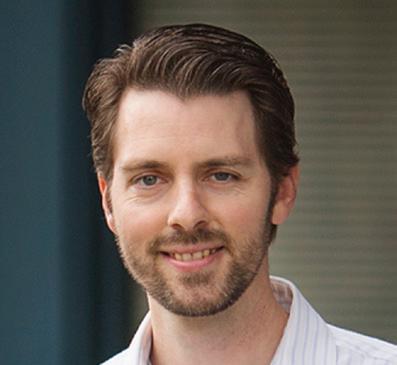
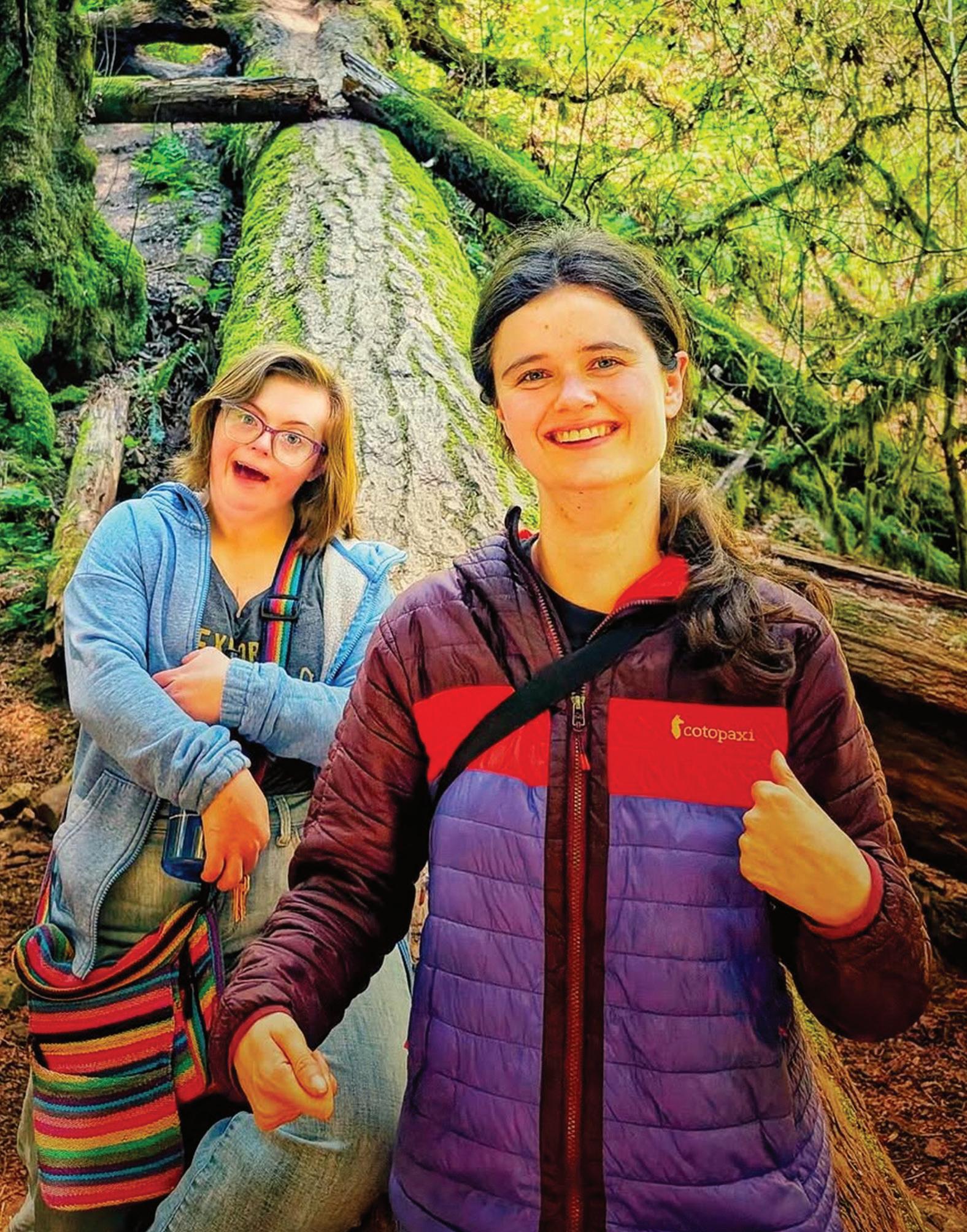

By John Krejcha
Housing can be a lifelong challenge for autistic and disabled individuals and their families. Finding a place that feels safe, supportive, and truly “home” is often more than just a practical need—it’s about belonging.
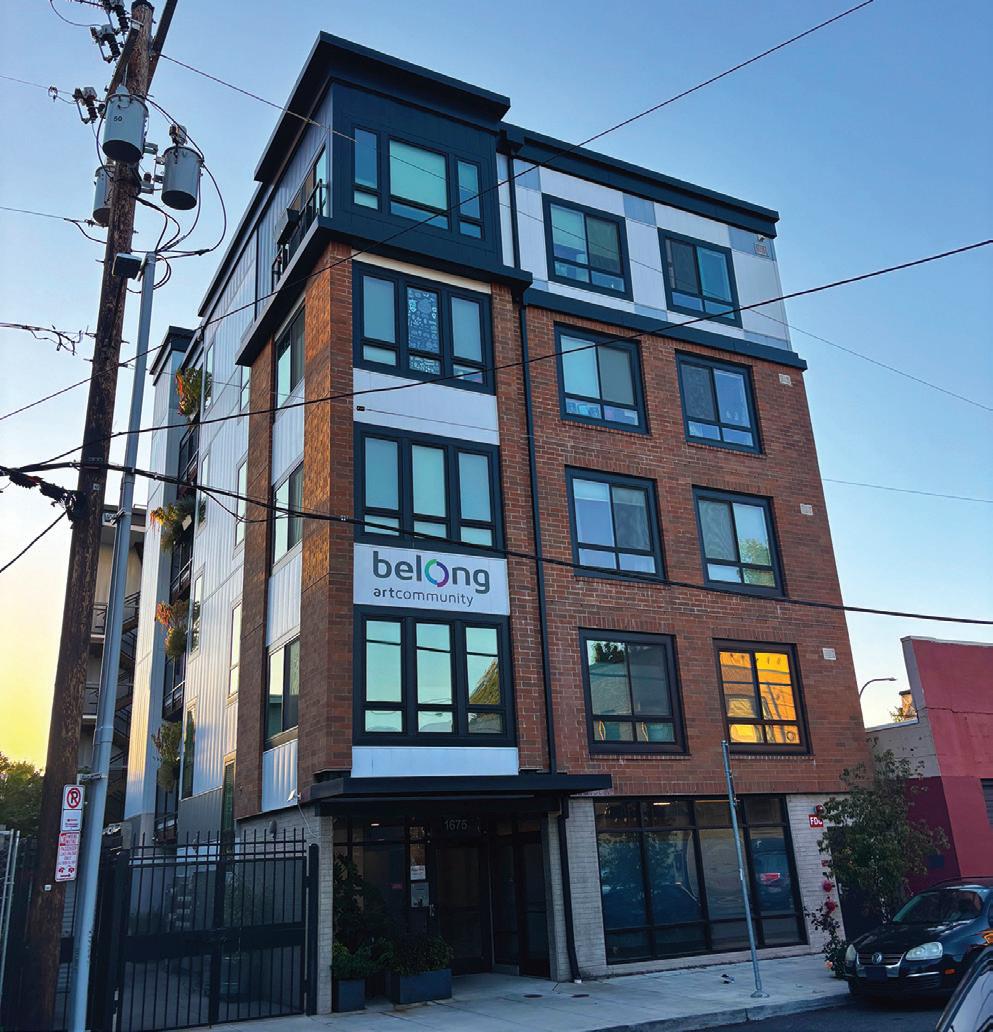
In the Summer 2025 issue of Spectrum Life Magazine, we celebrated the 10-year anniversary of Stephen’s Place in Vancouver, WA, a residential community designed to empower adults with intellectual and developmental disabilities. That story was just one example of the many creative housing solutions emerging across our region.
With each passing year, new and innovative models continue to grow from the deep need for inclusive housing. One of these is the Belong Art Community in Portland, Oregon. Built on the belief that everyone deserves a place to belong, Belong weaves together independent living, creativity, and community through the power of art.
To learn more about how this model is making a difference, we spoke with Executive Director Eli Stephens, who shared the story behind Belong’s founding, its vision for inclusion, and the ways residents are building independence and connection side by side.
Eli, thank you so much for allowing us to get to know the Belong Art Community. Would you please tell our readers a little bit about yourself?
My name is Eli Stephens, and I serve as the Executive Director
of Belong Art Community. I’ve spent much of my life working alongside adults with disabilities, and I’m passionate about creating spaces where people are not only supported, but truly seen and celebrated.
My work is deeply personal—my own story and relationships within the disability community have shaped my commitment to building environments where people feel connected, safe, and valued.
What is the origin story behind the Belong Art Community?
Belong began with parents of adults with disabilities and artists who shared a passion for social justice and inclusion. They believed adults with disabilities deserved more than services—they deserved true community.
After years of searching without finding the right home, the circle of allies grew. With the help of creative architects, committed developers, and dedicated supporters, they designed a community where people could live, create, and belong side by side.
In 2022, Belong Art Community opened with affordable, independent apartments and integrated programming. Organized as a 501(c)(3), it is governed to serve the priorities of its artist and disability community, supported by fundraising, grants, and partnerships like Artsify. Residents enjoy comfortable apartments with the freedom to connect with neighbors as much—or as little—as they choose.
Why is it called “Belong Art Community”?
Because everyone deserves a place to belong, the name Belong Art Community felt like a perfect fit. Art is our way of creating connection, expression, and visibility—but the true purpose is building a community where people of all abilities feel at home.
How would you describe the people who live at Belong Art Community?
Our residents are primarily young adults, with an average age between 20 and 40 years old, and they represent a wide range of abilities and support needs. What unites them isn’t a diagnosis, but a shared love of creativity and community.
We intentionally designed Belong as a neurodiverse community where neurodivergent and neurotypical residents live side by side, because our focus is always on the art and the person— not on ability level.
Continued on page 20
Beyond housing, Belong Art Community offers a variety of programs for the residents. Could you describe some of them?
Belong is more than housing—it’s a space for creativity, wellness, and connection. Through Belong and Artsify’s program options, residents can join weekly craft groups, yoga, and movement sessions, as well as community hikes that explore Portland’s trails and parks. Evenings often include music jams or karaoke, where residents and friends come together to share joy and expression. Many of these programs are also open to the wider autistic, artistic, and I/DD communities, inviting many to create and connect alongside us.
How do you incorporate life skills, health and wellness, and personal development into everyday living?
Life at Belong naturally builds independence—residents practice cooking, cleaning, and budgeting in their apartments or common spaces at their own pace. Each resident works on their skills in a way that works for them and in the way they choose.
And how does Belong support personal choice, autonomy, and decision-making for residents?
We take a person-centered approach, where residents make choices about their daily lives, activities, and supports. From decorating their apartments to deciding which programs to join, autonomy is built into the culture.
Our role is to provide encouragement and resources so each resident feels empowered to direct their own life while knowing community support is always there.
How do you support people within the I/DD community seeking to live independent lives within the broader Portland Metro area? What does a typical day look like?
Belong is designed to be a springboard into the broader community. We support residents in pursuing work, volunteering, education, and friendships throughout Portland while providing a stable home base.
A typical day might include a resident working at their job or taking a class, then returning home to cook dinner, join a craft group, or head out on a community hike. Independence is always encouraged, but with the assurance that support and connection are close at hand when needed.
How do you create a sense of belonging and dignity for residents and their families?
Belonging grows through shared meals, celebrations, and daily connection, while dignity comes from honoring each resident’s choices and individuality. Families see their loved ones not just housed, but truly valued as part of a caring community.
What are some challenges your team has faced and overcome them?
Like many new communities, we’ve faced challenges with staffing changes, funding, and the complexities of blending
housing with inclusive programming. We’ve overcome them through creativity, strong partnerships, and the resilience of our residents and staff, who remind us daily why this work matters.
We have some of the best staff members (in my opinion), and I am lucky to be part of such an incredible collective of caring people.
Do you have any stories or examples that illustrate how resident lives have been positively impacted?
We’ve seen residents build friendships, gain confidence by leading group activities, and take pride in learning new life skills like cooking or budgeting.
The biggest impact is watching people move from feeling like new members to the community to feeling truly at home in a community that values them.
Is there a resident story or moment that particularly moved you or reminded you why this work matters?
One resident recently cooked a full meal on their own for the first time and proudly invited neighbors to share it. That simple act of independence showed how much confidence can grow when people are given the right support and encouragement.
We agree! The right support and encouragement is essential to building independence. How can people contact you to learn more about Belong Art Community?
Our website is a great hub for everything.
Website: www.belongartcommunity.org
Email: eli@artsifyoregon.com
What advice would you offer to others wanting to create similar residential environments for adults with I/DD?
Start with listening. Spend time with adults with I/DD and their families to understand their hopes, needs, and strengths. Build partnerships—this work takes parents, residents, professionals, and allies working together.
Focus on relationships and community first, because programs and buildings only succeed when they are rooted in dignity, creativity, and belonging.
“Paint-slinging” John Krejcha is co-founder of Autism Empowerment and serves as Program Director. He serves on the Editorial Advisory Board of Spectrum Life Magazine and is co-host of the Autism Empowerment Podcast John is married to co-founder Karen Krejcha and is the father of two amazing children and their feisty cat, Zula. While John is the only one in the family who is not autistic, he is neurodivergent, dyslexic and a loving ally.
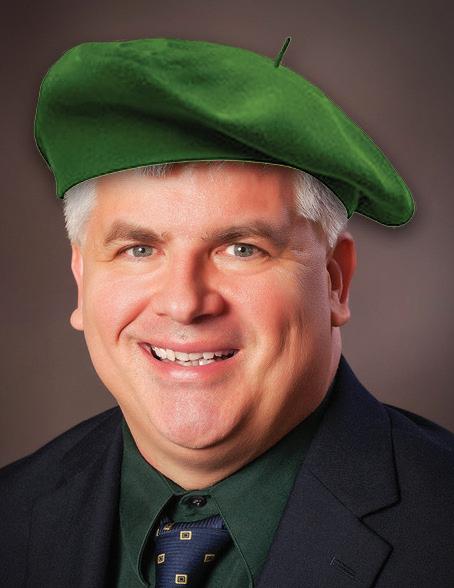
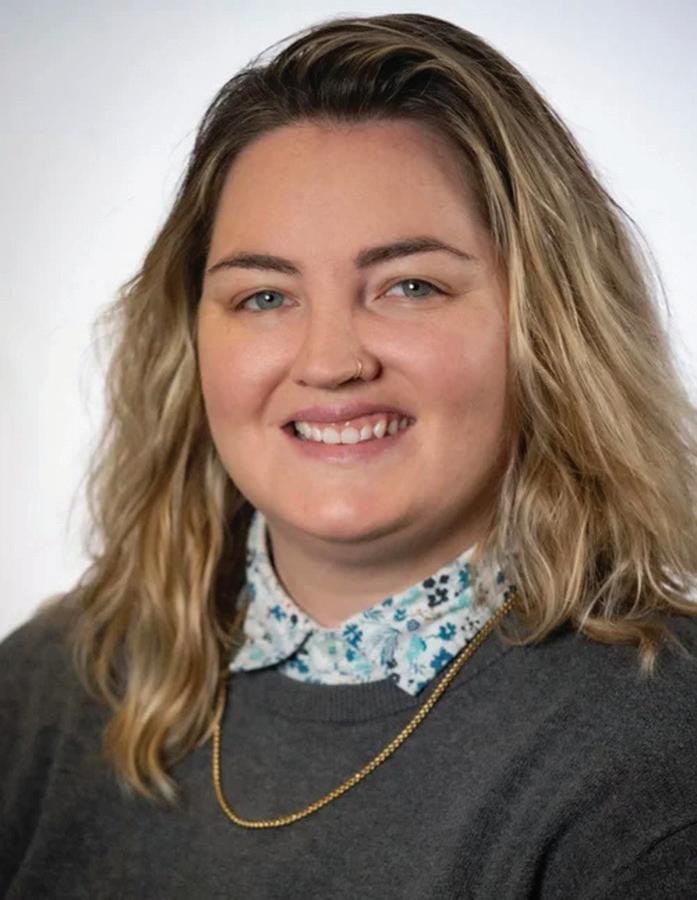
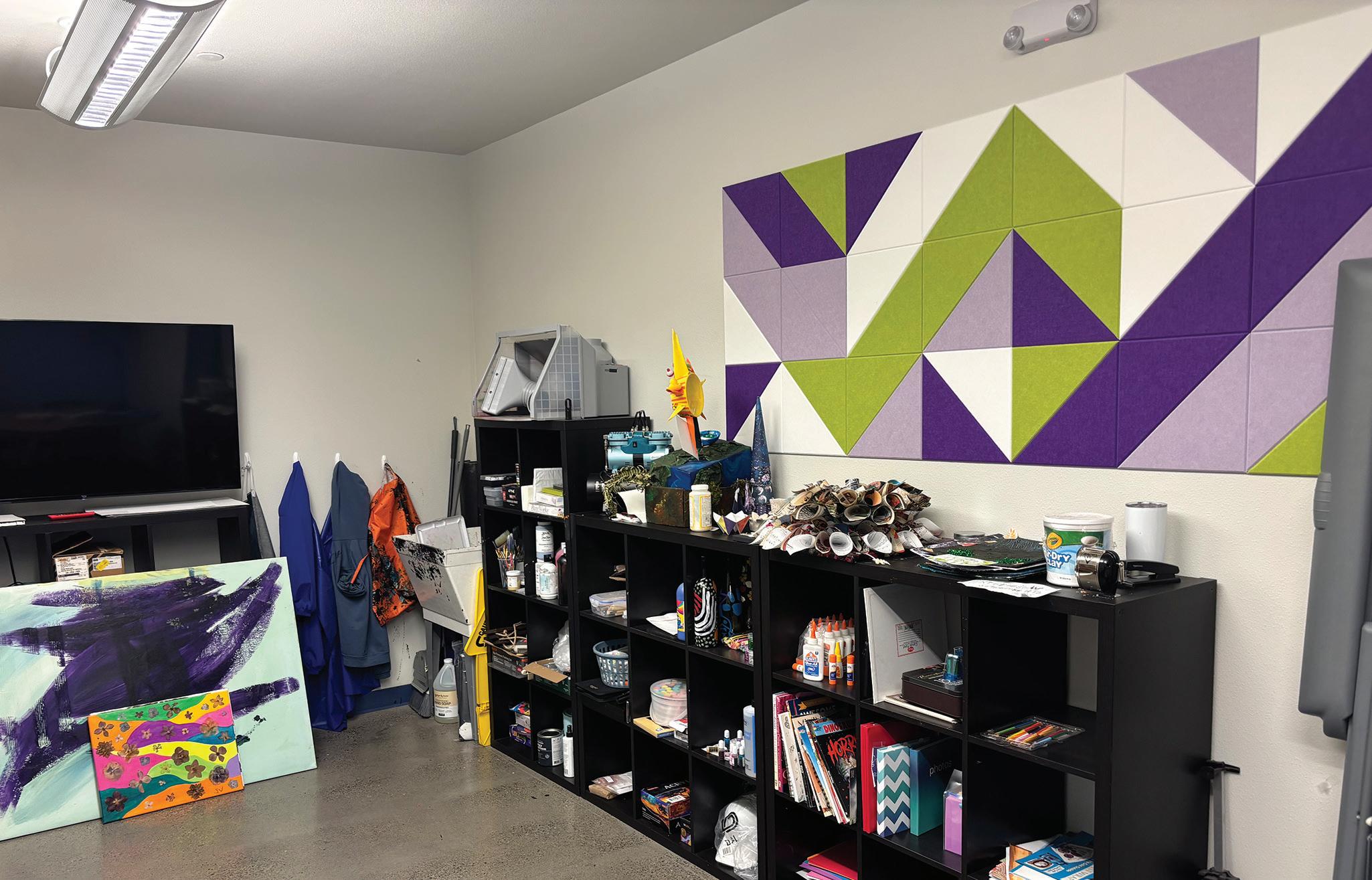
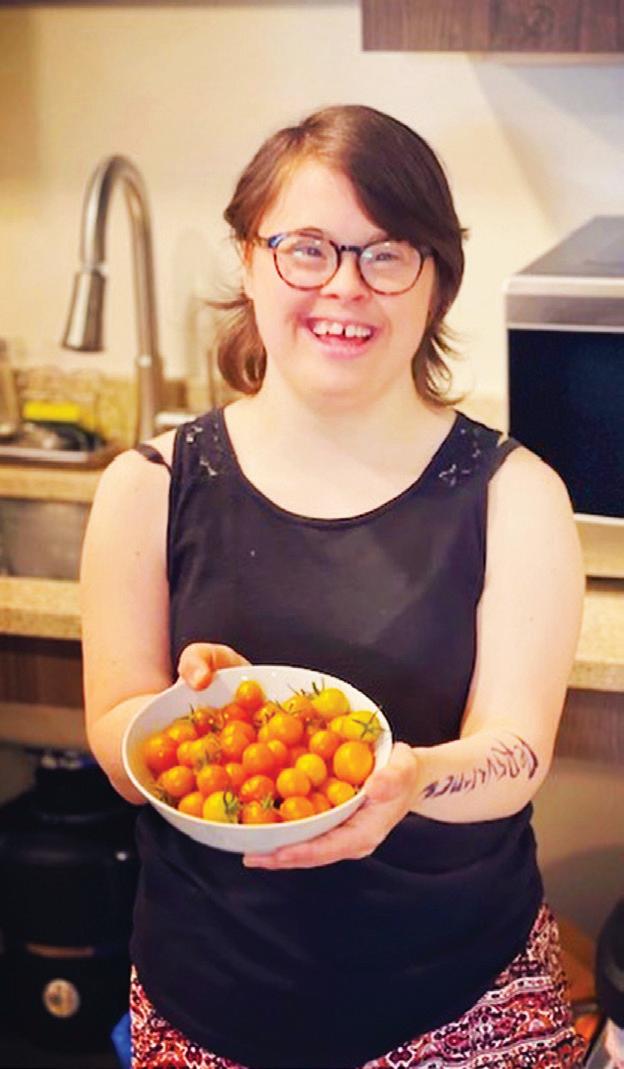

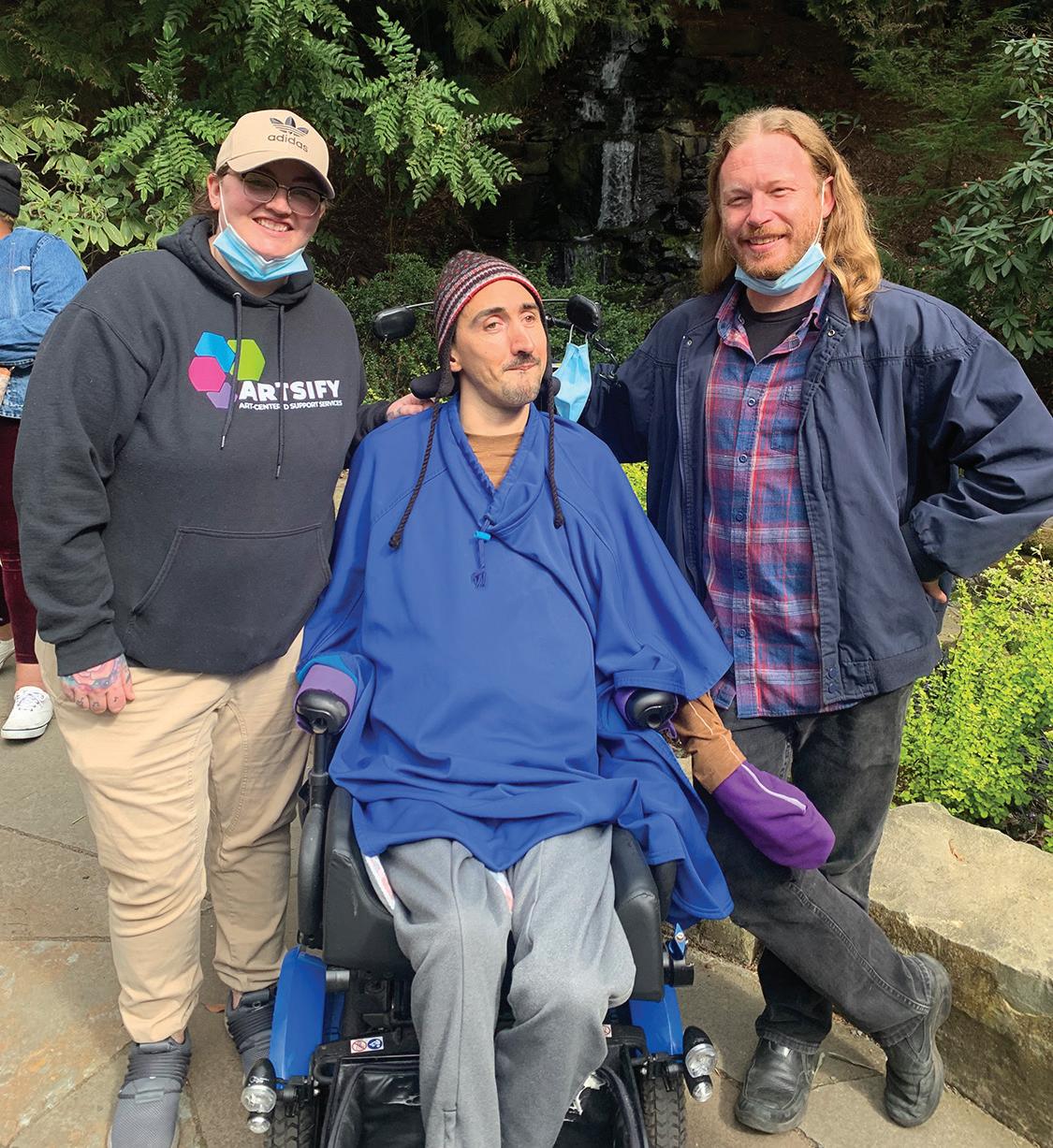
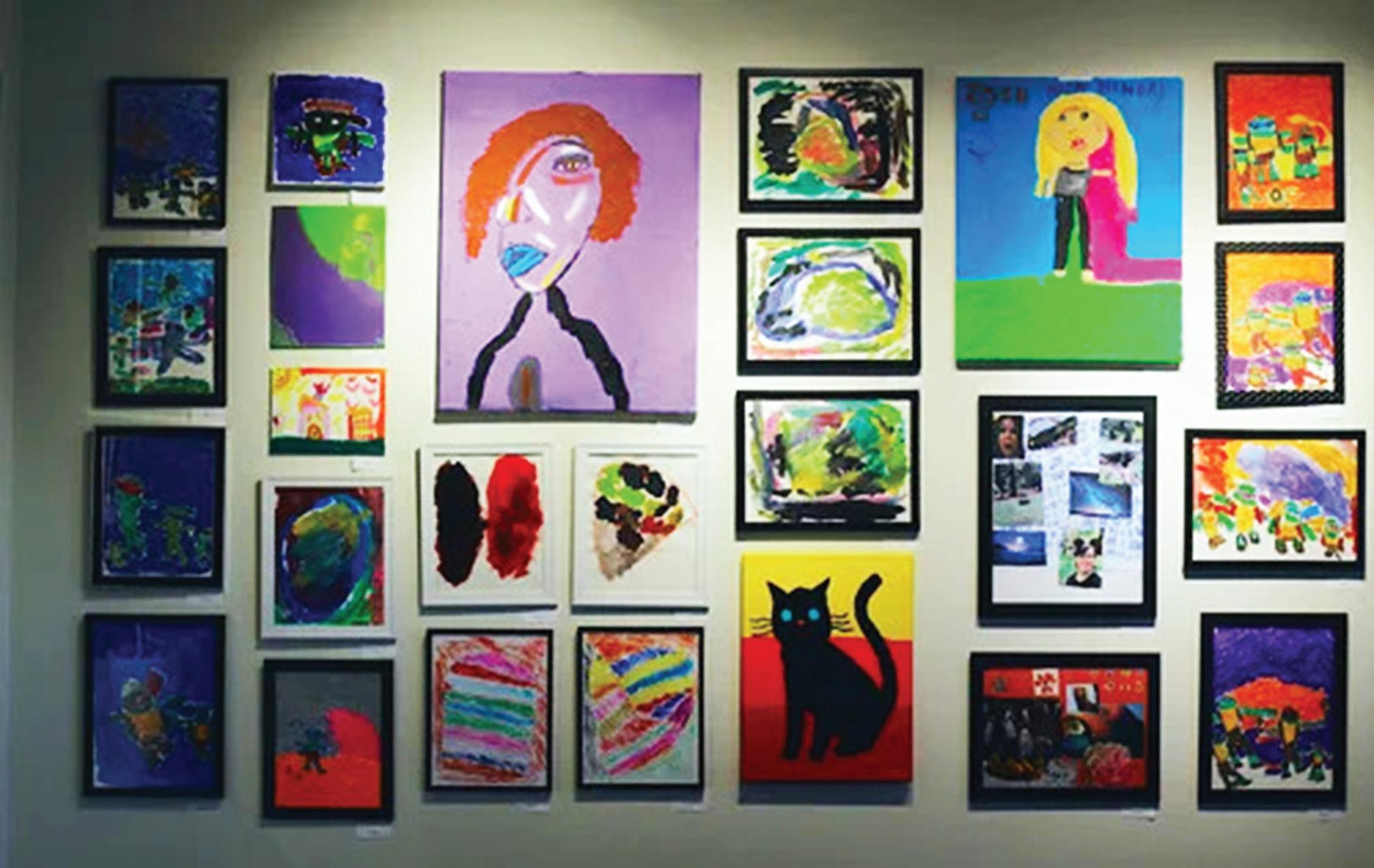
by Tanya English
In the 2024 Fall Issue of Spectrum Life Magazine, I had the honor of being part of the ongoing series “A Day in Our Lives: Actually Autistic Adults in the Real World.” The series features the lived experiences of autistic adults through answering some reflective questions.
One of the questions asked what I would tell my younger, undiagnosed self. I used the question to introduce an

that was the autism.” This happened to me several times while writing this article.
One day, I hope to write a book because I’ve come to realize that my experience is worth sharing. For more than half my life, I carried shame. When I tell my story, I do so with the hope that by sharing it, someone else might feel that weight lift.


important part of my journey, my sobriety. The answer I gave was that I would tell my younger self not to drink.
At the age of fifteen, I discovered alcohol, and it quickly became a tool to make the world feel easier to navigate. After more than half a lifetime of struggling with alcoholism, I quit drinking in 2021, just a few months after losing my mom. Sobriety helped me realize how much alcohol had functioned as a band-aid for living undiagnosed.
Now, a year later, I’m reflecting again, this time with another year of sobriety behind me and a deeper understanding of how alcohol and autism have intersected in my life.
An interesting thing happens once you discover you’re autistic: memories resurface, or you’re telling a story, and suddenly your brain says, “Ah yes, now it makes sense—
If they can see that what led them to their struggles might also hold the key to their strength, then shame loses its grip.
Letting go of shame opens the possibility of turning our battles into superpowers.
When I was a child, I had to move schools several times, and because of this, I quickly figured out the pattern: Befriend the quiet children and you will not be alone.
This worked well up until I reached high school. I was still attending school in Mexico, and the only public school was far from my neighborhood, giving me newfound freedom but also a chance to reinvent myself.
Continued on next page






I was fifteen, trying to fit in, and I still remember that first day of high school. I had picked out an outfit inspired by clothes I had seen on the show Beverly Hills 90210; I wore a long spaghetti strap dress with a baby t-shirt underneath.
This is one of those “It was the autism” memories because looking back, the only reference I had to high school was what I saw on TV, so I attempted to fit in by “dressing the part.” I didn’t know what to expect, so this was me trying to feel in control and prepared. That first day, I found myself drawn to a group of kids who I thought were so cool. Some

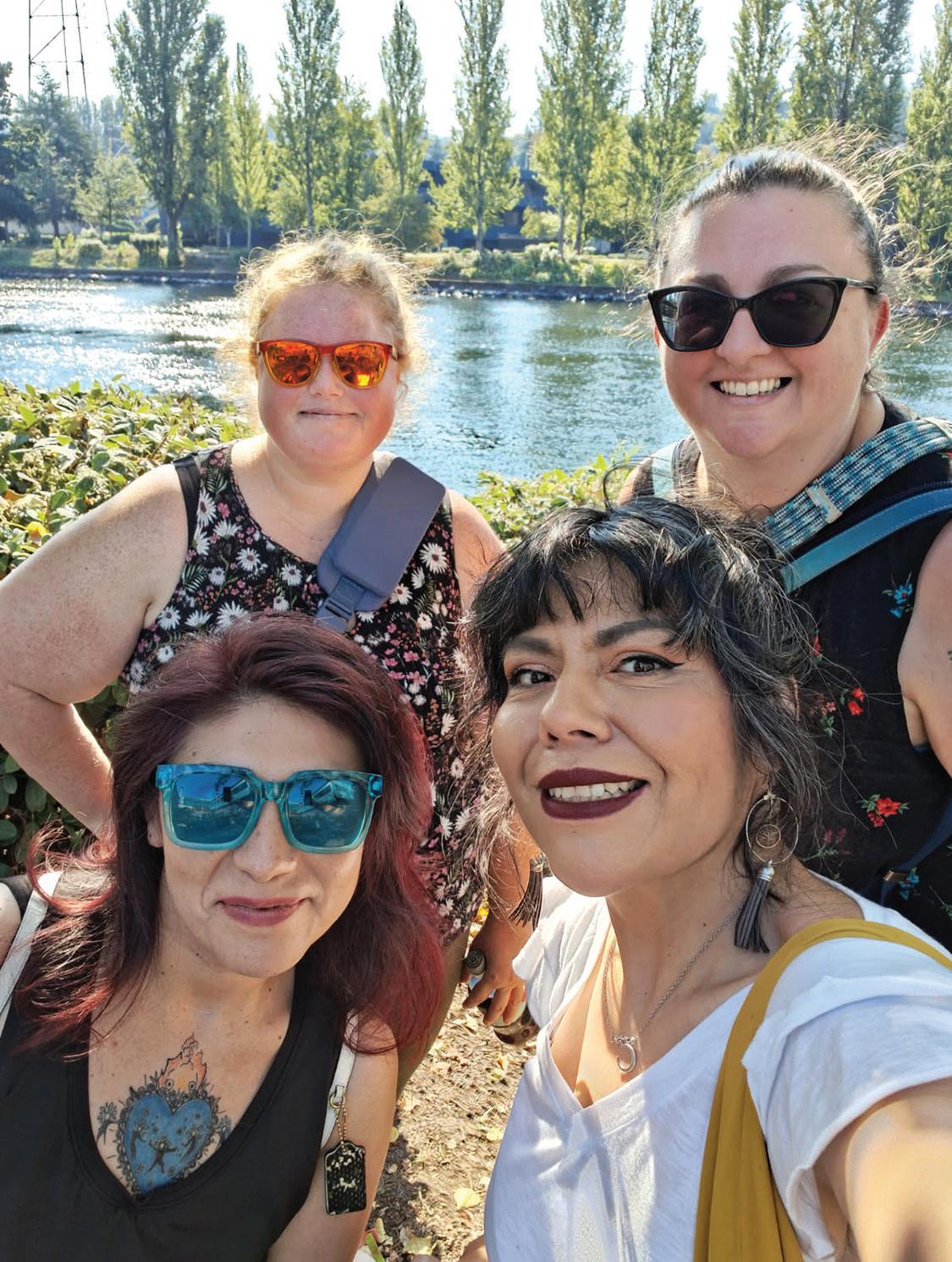


were dressed like “hippies,” some like “skaters,” some looked like they were in a rock band, and I wanted to be them so badly! They were what, at the time, people called the “alternative crowd,” and almost immediately, I decided that I did not want the silly 90210 clothes.
I wanted to dress like the cool kids and so I slowly changed my clothing and the music I listened to, and I started hanging around them. They took me in pretty quickly and I found friends in that crowd.
Continued on page 24
Masking, Motherhood, and Grief: My Story of Autism and Alcohol, continued from page 23
I do want to say, though, that this could be another topic altogether; knowing what I know now, I believe that subcultures and neurodiversity go hand in hand. I know there is a tendency to associate teens in subculture groups as a risk factor for substance use and I think that perhaps it is more complex than that.
When I was a teen, I was trying to handle and fight anxiety that was so overwhelming it made me so physically ill that I would often throw up. This is very inconvenient when you’re trying to just belong. I found myself trying to learn a different type of masking. I no longer wanted to perform as a golden child in order to be accepted by the adults around me; what I wanted and desperately needed was to be accepted by my peers.
This is when alcohol entered the picture. I have skipped details about the effects it had on my anxiety and the reason I kept going back to it, but I will say that had I had unconditional support from the adults around me without the pressure to be the perfect child, had I understood the anxiety in my body and what was going on in my brain and if I was equipped with coping mechanisms and people I felt safe with, I would not have continued drinking.
I didn’t have any of that support or knowledge, and so, I had to figure out ways to just “deal with it”—and so I found a band-aid for my anxiety and teenage angst in alcohol.
How it developed over time
In my 20s, my relationship with alcohol developed into binge drinking on the weekends, something that isn’t perceived as out of the ordinary by society. People expect young adults to “party” and be “wild and free,” at least the people I had around me did.
Even after I had my first child at 25, I continued drinking on weekends. My husband and I would sometimes go out together, and other times he would stay behind so I could go out with friends.
With just one child and plenty of grandparents to help out, we felt like we could still have it all. And because partying on weekends as young parents was seen as normal in my community, no one questioned it. From the outside, we were simply young parents blowing off steam.
In my 30s, I had two more children, and after my third child, drinking escalated into a nightly routine. What I’m about to say may cause judgment, but I want to speak it out loud because this is something I feel is not given the space to be processed by most parents, especially those who discover their neurodivergence later in life.
For me, sharing my truth has been a way to shine a light for others trapped in the dark, of saying: You’re not alone. There is a way out.
By then, I was a stay-at-home mom with three children, two of them only 19 months apart. I felt bored, touched out, overstimulated, overwhelmed, anxious, depressed, lonely, frustrated, afraid—so many emotions. The best way I can
describe it is that I felt trapped in motherhood.
I wanted to be a mother, but not like this. I had envisioned myself married with children, financially stable, with home-cooked meals at the table, volunteering at my children’s Montessori school, taking summer vacations, going to soccer games and birthday parties, the television version of family life. The kind of life that was supposed to come with adulthood.
Every day, I would log into social media and think to myself, everyone has that life but not you. You’re a failure. You’re failing as a mother, failing as a wife, failing as a friend, failing as a person. You did everything wrong, and you’re so behind in life, and there’s just no way to get ahead, no way out. This is your life, and now you’re stuck in it.
And so, I drank. For a few hours, the narrative in my head would quiet. I would kiss my children goodnight, pour another drink, and let myself believe that plans for a better future were possible. I would scroll social media, show love on my friends’ “perfect” posts, sometimes cry, sometimes post vague messages that were really cries for help, then drink until I eventually blacked out.
The next morning, the alarm would go off, and I would “function” and go through the motions of the day. I would joke with friends about how “mommy needs her juice” as I would continue living on autopilot, motivated by the fact that at 6 pm that evening, I could have my reward for getting through the day.
On especially hard days, I could start a little earlier because I deserved it. I drank because I was a tired mom and found myself being part of yet another subculture, the “Mommy wine culture.”
The thing is, when you spend your whole life masking, code-switching, fawning, people pleasing, doing the things you need to do to survive and to be liked, no one ever questions your drinking, and if they do, they’re just not part of your circle—the circle that doesn’t mind because they also drink, so it’s normalized.
Or, you crafted such a convincing picture of functioning for them that the thought of something being “wrong” with you makes them uncomfortable because if there’s something wrong with you, then the possibility is put on the table that there must also be something wrong with them, even if it isn’t about them.
When you spend so much time curating circles of people who normalize drinking, the possibility of those relationships changing is terrifying. So, it’s easy to just continue masking one drink at a time.
On November 3, 2020, my mother died. When I tell people my story, I explain that I’ve always had a strong need for control, whether from my autism, childhood trauma, being the firstborn Latina daughter, or being a Virgo. Take your pick.
Continued on next page
The grief was so overwhelming that the only way I could cope was to attempt to take control of it by giving it meaning. I told myself that if my mom had to die, it was because God, the universe, or some higher power needed her to go so that I could live a life that would make her proud.
Four months later, I quit drinking and began a journey of figuring out who I was. That’s when I discovered I am autistic. The anxiety, the masking, the endless efforts to fit in, the frustration with life not turning out how I expected it all made sense.
Had I had the tools and space to know myself earlier, instead of living an entire life working so hard just to feel accepted and to feel like I belonged and that I was loved just for being me and not for what I could do for others, life might have been very different. But I’ve made peace with that.
Now, as I parent teens, I continue my own self-discovery alongside them. The best part is, they don’t have to figure it out alone. At some point, I realized my mom had always been proud of me. What I needed was to learn to be proud of myself.
That’s something I tell my kids all the time: I am always proud of you, but what matters is that YOU are proud of YOU.
Grief is always present, and I still need control, but now I use it to live each day in a way that honors both my mom and myself. Every day is a chance to make her proud and to make myself proud, too.
When I first started writing this piece, I wanted it to be an informative article with statistics about substance use disorder (SUD) and autism. The truth is, we’re not fully there yet. Research is emerging, but there’s still so much we don’t know. Screening for SUD in autistic patients is not common practice, and the actual prevalence of SUD among neurodivergent adults is unclear.
This matters. Without understanding the need, treatment options remain designed for the general population and not for autistic individuals who may struggle with anxiety, group-based activities, or assumptions of “unwillingness to engage.”
A systematic review of autism and co-occurring SUD explains that these barriers not only limit treatment success but may actually worsen symptoms. (Arnevik & Helverschou, 2016).
We need more people with lived experience involved in substance use research, behavioral health, and treatment
design. As more of us share our journeys, my hope is that the future will include better, more inclusive options for autistic individuals facing substance use disorder.
“If we can share our story with someone who responds with empathy and understanding, shame can’t survive.”
— Brené Brown
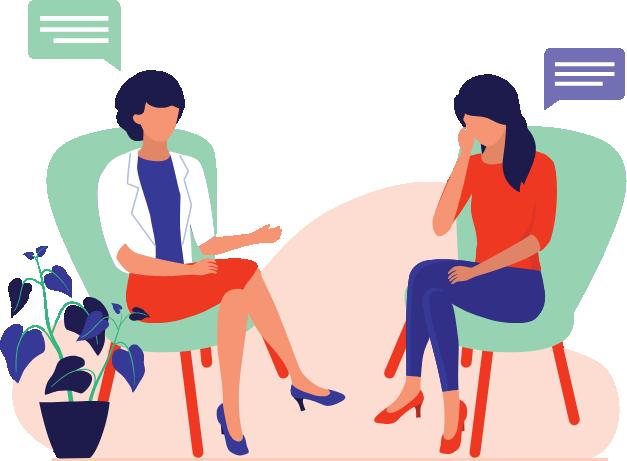
If you or a loved one needs help navigating substance use/alcohol use disorder, there are people you can reach out to:
Washington:
• Washington Recovery Help Line: https://www.warecoveryhelpline.org
Oregon:
• Lines for Life: https://www.linesforlife.org
United States:
• Substance Abuse and Mental Health Services Administration: https://www.samhsa.gov/
Reference:
1. Arnevik EA, Helverschou SB. Autism Spectrum Disorder and Co-occurring Substance Use DisorderA Systematic Review. Subst Abuse. 2016. https://pmc.ncbi.nlm.nih.gov/articles/PMC4990150/
Tanya English was born in Los Angeles, California, but spent her formative years in Tijuana, Mexico, before becoming a Vancouver, WA, resident in 2014. She is a bilingual and bicultural autistic advocate with a strong sense of justice. As the Clark County Parent Coalition Coordinator at PEACE NW, and a board member of Autism Empowerment, Tanya works closely with families and individuals, helping them connect to resources, engage with their community, and navigate complex systems. She believes that strong, supportive communities foster healthy families, and in turn, healthy families empower individuals to thrive.

By John Krejcha
Meaningful employment is one of the greatest gateways to independence and dignity, yet for autistic and disabled individuals, it remains one of the steepest barriers.
According to the US Department of Labor in August 2025, only 25.1% of those with a disability were employed compared to 67.9% without a disability. These numbers represent more than statistics—they reflect countless untapped strengths, overlooked skills, and missed opportunities.
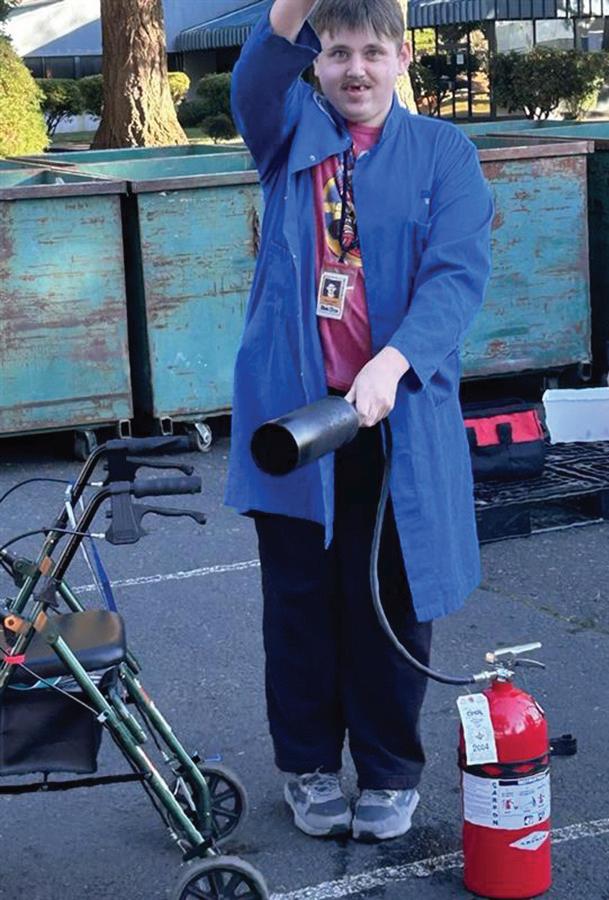
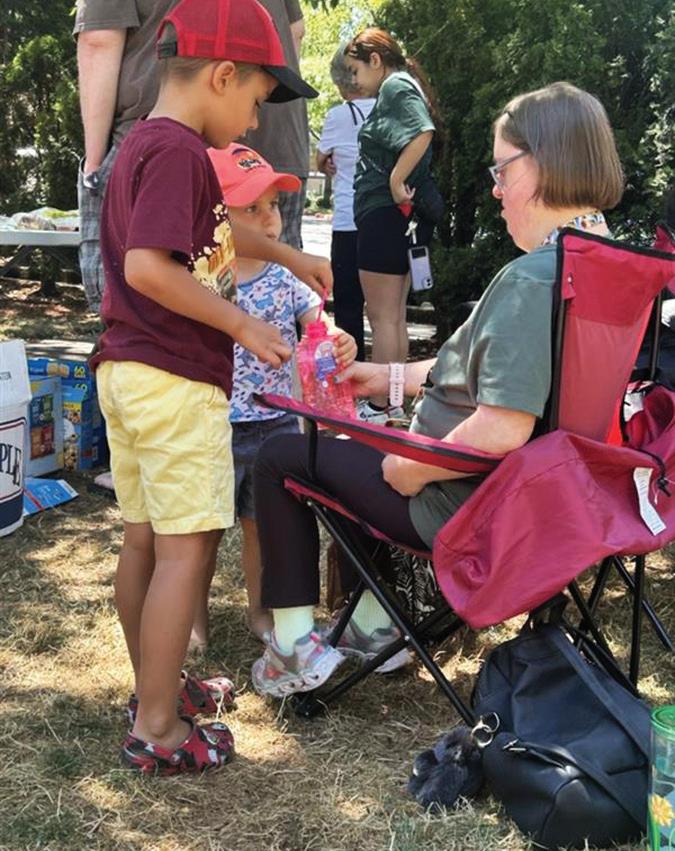

Supported Employment in both Clark and Cowlitz counties. Before I tell you my personal story, I would like to recognize everyone we work with in Washington state.
With October being National Disability Employment Awareness Month (NDEAM), it is an important time to reflect on the contributions of individuals with disabilities in the workforce, raise awareness about the challenges they face, and celebrate the importance of inclusive practices in all areas of our communities.
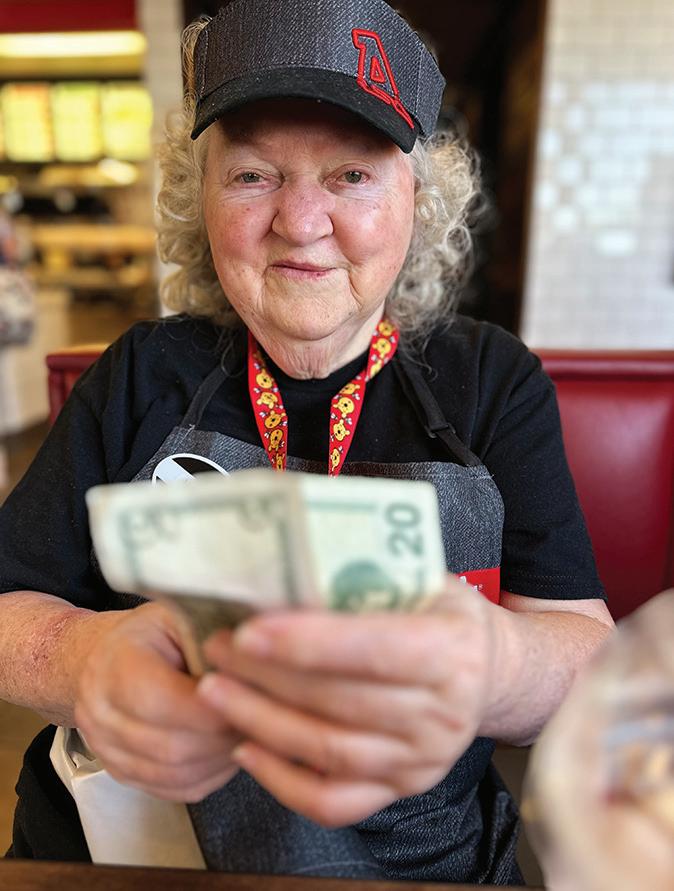
This October 2025 marks the 80th anniversary of National Disability Employment Awareness Month, founded in 1945. It’s a time to honor the progress made, but also to confront the work that remains to ensure true equity in the workforce.
One Washington state organization leading this charge in Clark and Cowlitz counties is Employers Overload. Through supported employment and community partnerships, individuals with intellectual and developmental disabilities (I/DD) are finding meaningful, lasting work.
At the heart of this mission is Executive Director Rosemary Boyles, whose professional journey and personal story reflect both passion and purpose. We sat down with Rosemary to learn how Employers Overload is changing lives, supporting families, and building more inclusive communities.
Rosemary, thank you for your time. Please introduce yourself to our readers.
Hi, I’m Rosemary Boyles, the Director of Employers Overload

How does NDEAM connect to your work and personal perspective?
It opens the opportunity to broaden the conversation about disability rights, accessibility, and inclusion across all aspects of life. It’s about shifting the narrative, removing the limitations, and creating the possibilities.
For me, NDEAM is a reminder of both how far we’ve come in advocating for people with disabilities and how much more work is still ahead.
It’s an opportunity to celebrate the strength, creativity, and resilience of the disability community, especially in the workplace, but also in education, healthcare, and daily life.
Personally, this month sparks even deeper conversations about the need for inclusive opportunities. It’s a time to reflect on how we can better support individuals with disabilities
Continued on next page
and ensure equal access to opportunities, whether that’s in employment, education, or social inclusion.
Very well said! How did you first get involved in supporting individuals with disabilities?
While my current work in the disability field is where I’ve found my true passion, it wasn’t the path I originally set out on. Back in 1994, I attended college with the goal of pursuing a career in criminology. I had my heart set on becoming an investigator.
But as life often does, it took me in a different direction. I was a single mom with two young daughters, and I needed to take a step back and find a job, a job where I could be off when my kids were off. Over time, I discovered my real calling was in supporting individuals with disabilities, and that’s where I’ve poured my energy and heart ever since.
As I transitioned into working with individuals with developmental disabilities, I discovered not just a job, but a purpose, one that felt deeply meaningful and aligned with my
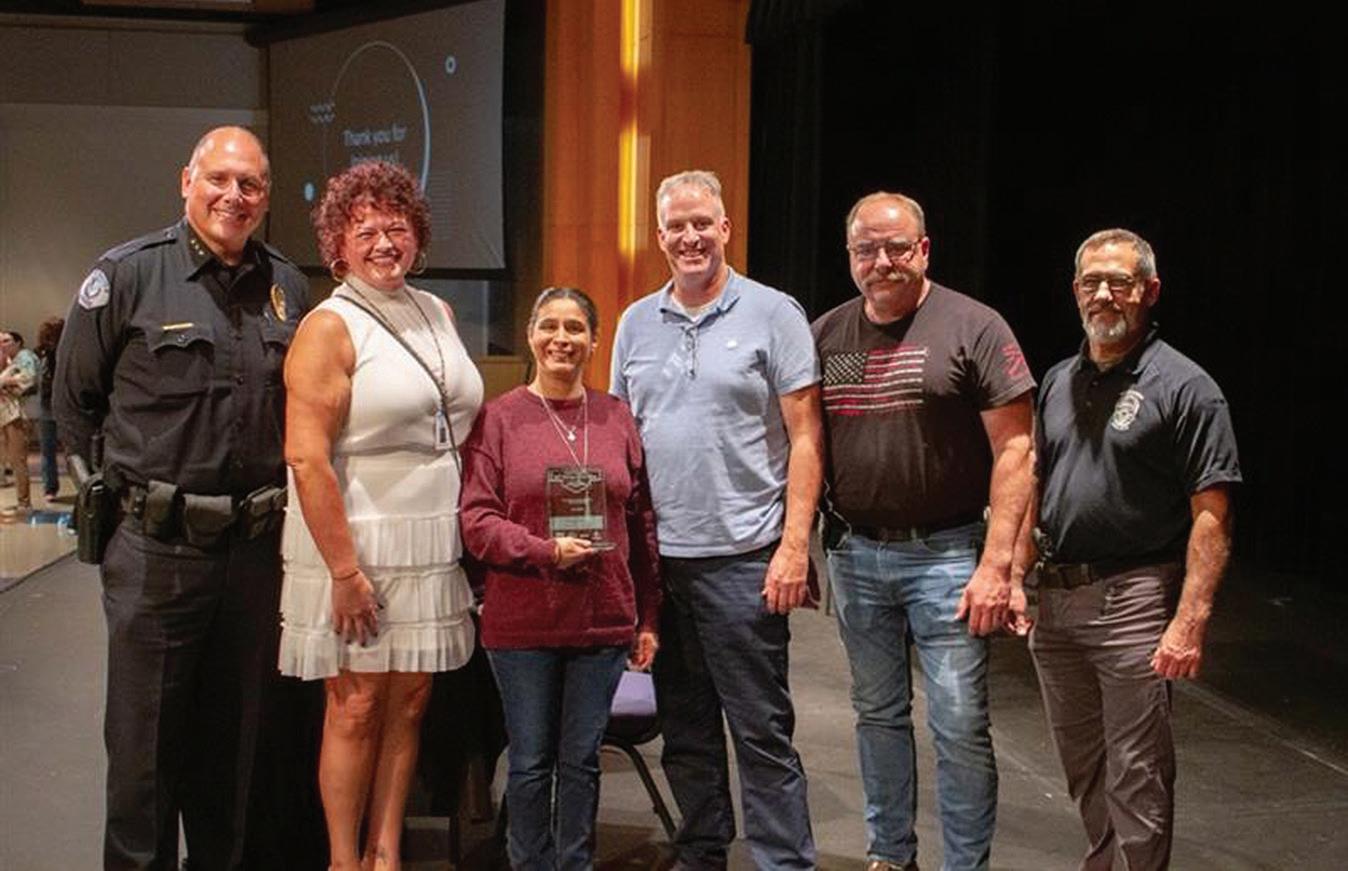
values. This field has allowed me to combine my passion for helping others with the opportunity to create real, positive changes in people’s lives.
It’s become so much more than a career for me; it’s a way to be part of a larger movement, one where everyone, regardless of ability, can lead a life of dignity, independence, and fulfillment.
What personal experiences have shaped your passion for this work?
I started my professional path in 1995, working in special education with the school district, supporting students anywhere from primary age to transition students navigating their way to adulthood. It didn’t take long for me to realize that this was where I needed to be.
I found a love in helping students create ways to communicate their needs and helped move curriculum learning in a visual outline for students to learn visually. As my daughters grew
up and completed high school, I decided to look further into what work could look like supporting adults with I/DD outside of the school district.
I transitioned and accepted a position as a job developer with Employers Overload in June of 2012. Over the years, I’ve had the privilege of helping individuals with developmental disabilities not just to find jobs, but to build fulfilling, independent lives within their communities.
I’ve always believed that everyone deserves the chance to shine, no matter their abilities.
And that belief is personal. I’m a mom of two incredible daughters and a proud nana to five wonderful grandchildren, three of whom are on the autism spectrum. My family’s journey has deeply shaped my approach to my work, giving me a firsthand perspective on the challenges and triumphs that come with navigating life in a world that isn’t always designed with disabilities in mind.
courtesy of Employers Overload
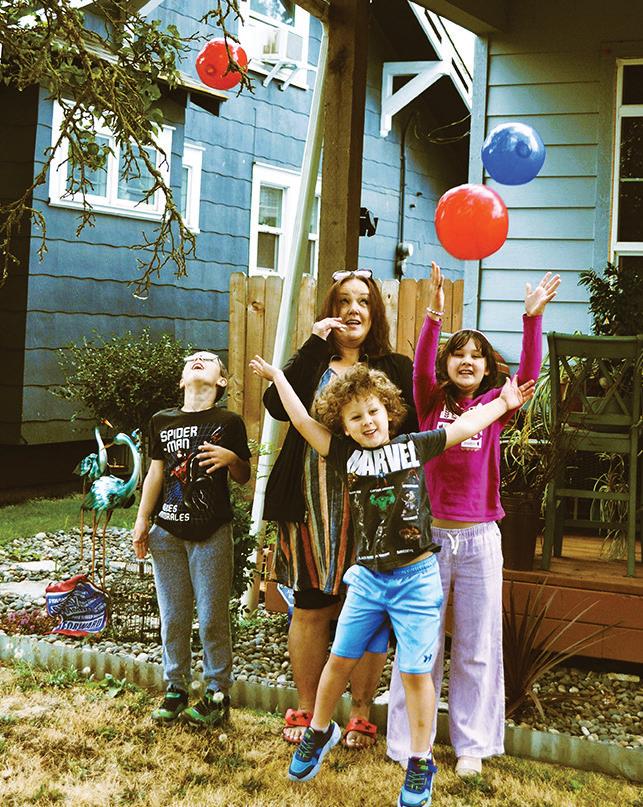

I live in Clark County with my wonderful husband, William, and I care for my aging mom. I am also a dog mom to Sophia, Montana, Theo, and Snoop.
Please tell us a little more about Employers Overload.
Since 1947, Employers Overload (EO) has been at the forefront of connecting individuals with meaningful employment opportunities and helping businesses thrive with a skilled, dedicated workforce. What sets us apart is our personalized approach: we don’t just fill positions; we create lasting partnerships between employers and employees.
By truly understanding the unique needs of both sides, we tailor workforce solutions that boost productivity, drive success, and foster long-term satisfaction. Our mission isn’t just about finding jobs, it’s about building careers, strengthening communities, and empowering people to achieve their professional goals.
Continued on page 28
In 1992, supported employment was introduced in Clark County as a game-changer for individuals with disabilities seeking meaningful work. It was more than just placing someone in a job, it was about providing more tailored support to ensure long-term success in the workplace.
This approach was a natural extension of the staffing process, as it focused not only on matching individuals with employers but also on offering ongoing assistance, training, and resources to help both the employee and employer thrive.
Supported employment created an inclusive pathway for individuals who may have previously faced barriers to employment, offering them the chance to contribute to the workforce in a way that aligned with their skills and abilities.
It was a perfect fit with staffing solutions, as it emphasized not just finding a job, but ensuring the right support systems were in place to foster job retention, productivity, and personal fulfillment. In this way, it became a key tool in building a workforce that values diversity and empowers individuals to succeed.
Who do you serve and what services do you provide to autistic and I/DD community members?
We serve individuals on the autism spectrum and with I/DD, providing support and resources they need to create fulfilling, independent lives. Our focus is on empowering individuals to achieve their personal goals whether that’s in the workplace, at school, or within the community. We work to break down barriers and create opportunities for individuals to live, learn, and contribute.
What is the age range of people that you support?
Currently, we support a diverse group of participants, ranging in age from 17 to 84 years. With a strong focus on both employment and community inclusion, we serve over 200 individuals, helping them achieve their personal goals and become active, engaged members of society.
Notably, over 74% of the individuals we support are on the autism spectrum or have a dual diagnosis with autism, showcasing our team’s knowledge and commitment in serving a community that is diverse in age and need, while ensuring that everyone has access to the opportunities and resources they deserve within their community.
Tell us a little about the EO staffing team.
We currently have a dedicated team of 25 internal staff members who bring a wide range of talents and expertise to the field of supported employment. Collectively, our staff have extensive experience working with individuals across diverse abilities, including autism, I/DD, mental health conditions, and physical disabilities.
Our team’s strengths include specialized training in person-centered planning, job coaching, vocational assessments, and employer engagement. Many of our staff have years of hands-on experience supporting individuals to prepare for, obtain, and maintain meaningful employment in competitive and integrated work settings.
What sets our team apart is the depth of compassion and commitment each member brings to their work. Staff are skilled at building strong relationships with individuals and employers alike, ensuring that support strategies are both personalized and sustainable.
With a wealth of knowledge in navigating workplace accommodations and fostering inclusive environments, our team is well-positioned to empower individuals to achieve their employment goals and contribute their unique strengths to the workforce.
What kind of training do staff receive to help understand the needs of people with disabilities that you serve?
Our staff receive a combination of formal and hands-on training to ensure they understand the unique needs of the people we serve.
In the world of I/DD, there’s no manual that can fully capture the breadth and depth of these diverse needs. Instead, staff are paired with an established employee as the learning is rooted in immersion, working directly with individuals, gaining real-time insights, and adapting to the different ways people experience and interact with the world.
While we do provide professional training on specific disabilities and learning differences, including autism, each team member’s education is ongoing and tailored to the individuals they support.
We focus on building an intuitive understanding, encouraging staff to embrace flexibility, empathy, and patience. We also ensure that staff are equipped with practical skills in areas like communication, social engagement support, and inclusion, which are crucial for working with individuals on the autism spectrum or with other developmental disabilities.
In addition to this hands-on experience, staff regularly engage in workshops, peer support, and continuing education to stay updated on best practices and new approaches in the field.
How does a prospective employee access your services?
We typically connect with prospective participants either when they reach out to us directly or when a counselor or case manager initiates the process on their behalf. Most participants are supported through services like the Department of Vocational Rehabilitation (DVR) or Developmental Disabilities Community Services (DDCS).
When these services are accessed, the cost to the participant is zero. Both DVR and DDCS work by funding the specific goals identified in each participant’s individualized plan, ensuring that they receive the support they need to succeed without financial barriers. I am always willing to help a participant or anyone needing support in getting connected to the correct services.
What does a typical intake and placement process look like?
The intake process for supported employment is designed to be both structured and person-centered, ensuring that everyone receives services tailored to their unique strengths and goals.
It begins with a referral or initial contact, followed by an intake meeting where staff explain the program, complete necessary paperwork, and begin building a relationship with the participant.
From there, a discovery phase helps identify the individual’s interests, abilities, and support needs through interviews, assessments, and community-based activities. Staff also assist with benefit planning, transportation, and accommodation considerations to remove barriers to employment.
Together, the participants and staff then create a personalized employment plan that outlines career goals and strategies for success. This foundation leads into job development and placement, where staff provide hands-on support with applications, interviews, and employer engagement. Once employment is secured, ongoing coaching and follow-up services ensure stability and long-term success.
For individuals who require more intensive support, such as those working with a job coach, placements often start with part-time positions that allow for gradual skill-building and confidence development. Our work is very customizable to each participant we serve.

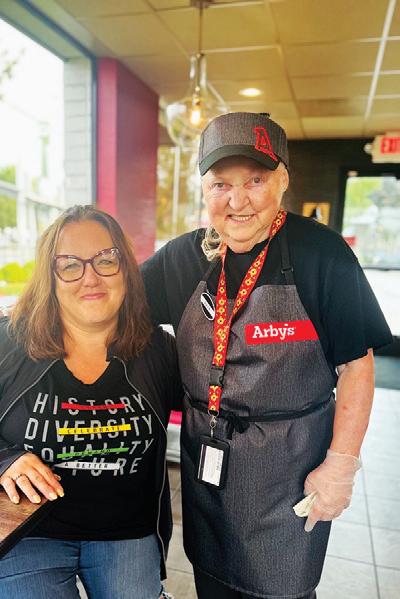
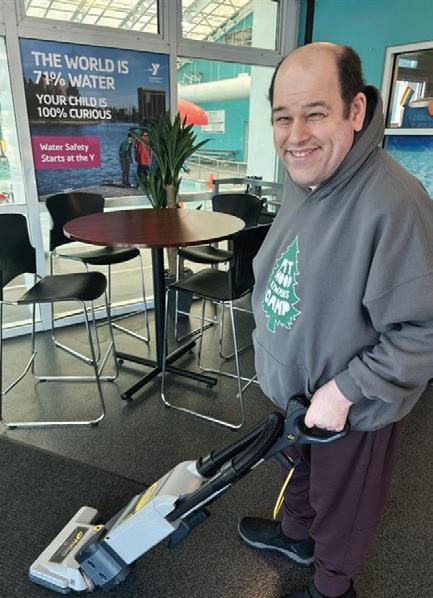
At every stage, the process emphasizes empowerment, inclusion, and the belief that every person has valuable contributions to bring to the workforce.
Can you share examples of different types of employees you’ve helped and the industries they’ve been placed in?
Sarah, who benefits from a job coach due to learning differences, began working part-time at a local café. Her coach provided on-the-job support, helping her learn routines, communicate effectively with coworkers, and manage workplace expectations. Over time, as Sarah gained confidence and competence, her hours increased, and she became more independent in her role.
By contrast, individuals who need less support and are ready for full-time work can move more quickly into direct job search activities, employer networking, and competitive interviews.
John, for instance, was able to work full-time in a retail position with minimal coaching. Staff assisted him with resume preparation and interview strategies, but he was largely independent on the job, checking in periodically for guidance and support as needed.
Supported employment placements span a wide range of industries, reflecting the diverse abilities and interests of participants. Common opportunities include retail, hospitality, food service, healthcare support roles, custodial work, office administration, and warehousing.
For some participants, placements are customized to fit unique strengths, such as creative fields, animal care, or technology-related roles.
Regardless of the level of support or industry, the goal remains consistent: to connect individuals with meaningful, integrated employment where they can contribute their talents, gain independence, and achieve long-term success.
Do you encourage clients to disclose their disabilities and accommodation needs to potential employers during job interviews?
When it comes to sharing information about a disability or requesting accommodation, we emphasize that it is entirely the participant’s choice.
During the placement process, staff provide guidance and education on the benefits and considerations of disclosure, helping participants understand how sharing information can support them in performing their job successfully.
Some individuals may choose to discuss accommodations during interviews to ensure their needs are met from the start, while others may prefer to wait until after they are hired.
Our role is to empower participants to make informed decisions, provide strategies for effective communication with employers, and ensure that any necessary accommodations are requested respectfully and appropriately, supporting a positive and inclusive employment experience.
How do you prepare employees for success in their new employment setting?
Preparing participants for success in their new employment settings begins well before their first day on the job. Training is highly individualized and focused on building the skills and confidence needed for each specific role.
This preparation often includes job-readiness training such as workplace etiquette, time management, communication skills, and understanding employer expectations. For participants who require more support, staff provide hands-on coaching, modeling tasks, and role-playing scenarios to practice skills before entering the workplace.
Once a participant is placed, EO staff continue to support them on-site as needed, helping with task mastery, social interactions, and problem-solving. For those who need less direct support, staff provide guidance, check-ins, and strategies for navigating new responsibilities independently.
We also work closely with employers, offering education about accommodations and inclusive practices to ensure that
Continued on page 30
the workplace environment fosters success. By combining pre-employment preparation, individualized support, and ongoing coaching, EO helps participants build the confidence and skills they need to thrive in their roles and achieve long-term employment goals.
And how do you prepare employers to support their new employees?
We take a proactive approach to prepare employers to support new employees effectively, including those on the autism spectrum or with other disabilities. Before a participant begins work, EO staff meet with the employer to discuss the individual’s strengths, work style, and any accommodations that may be helpful.
Accommodations can vary depending on the person’s needs but often include things like structured routines, visual schedules, written instructions, noise-cancelling headphones, flexible breaks, or clear, concise communication methods.
Employers receive guidance on inclusive workplace practices, communication strategies, and ways to provide constructive feedback in a supportive manner. For positions where participants may require a job coach, staff may also be on-site initially to model training, demonstrate task expectations, and help establish routines.
By collaborating with employers and providing these supports, EO staff help ensure a workplace environment that is both inclusive and conducive to the success and long-term retention of all employees.
What do you believe positively differentiates Employers Overload from other employment agencies?
What sets Employers Overload apart from other employment agencies is our collaborative, team-based approach to supported employment.
While many agencies provide individualized services, EO emphasizes a coordinated network where all our employment specialists work together, sharing expertise, resources, and strategies to ensure that each participant receives comprehensive support.
We are fortunate in Clark County to have strong relationships with our stakeholders and other employment agencies, which allow us to leverage community connections and local resources to better serve participants.
This teamwork enables us to match individuals with positions that closely align with their skills, interests, and goals, while also providing consistent follow-up and on-the-job coaching. Participants benefit not only from individualized attention but also from the collective experience of a highly skilled, diverse team.
By combining the strengths of multiple specialists and cultivating strong community partnerships, EO offers robust, flexible, and effective services that help participants achieve meaningful, long-term employment success.
What are some of the biggest challenges participants face in finding work?
One of the largest challenges our team faces in placing individuals in employment is finding positions that align closely with both the participant’s skills and interests while also meeting employer needs.
Some participants require additional support, such as job coaching or accommodations, which can make it more complex to match them with roles that allow for independence and growth.
Transportation barriers, fluctuating work schedules, and workplace accessibility can also present obstacles for some individuals. Another challenge lies in educating employers and raising awareness. While many businesses are eager to hire diverse talent, some may need guidance on inclusive practices, accommodations, or how to integrate supported employees successfully into their teams.
Finally, external factors such as economic shifts, industry hiring trends, or limited local job opportunities can affect placement timelines. Despite these challenges, the EO team leverages collaboration, creativity, and strong community partnerships to find meaningful, long-term employment opportunities for every participant.
What kind of expectations should a potential employee have about how long it may take to be placed?
One of the most common questions participants and families ask is, “How long will it take to find a job?”
The honest answer is that it varies. We remind people that the timeline depends on three main factors: the participant’s goals, the local job market, and the level of support needed.
Some individuals are matched with positions within weeks, while others may take several months before the right opportunity comes along. Our priority is quality and sustainability, helping each person find a role where they can grow, contribute, and succeed long term.
There are, of course, challenges that can make the process take longer. Sometimes it’s as simple as limited openings in a specific field, or a mismatch between the skills a participant brings and what an employer is seeking.
In other cases, employers may need time and support to learn about accommodations and inclusive hiring practices. Transportation, scheduling barriers, and even larger economic shifts like hiring slowdowns or seasonal job availability can also play a role.
Even with these hurdles, our team remains dedicated to persistence and partnership. We work closely with both participants and employers to build bridges, educate, and create opportunities across a wide range of industries.
The message we share with every participant is this: while the timeline may vary, we will walk alongside you until the right opportunity is found.
Continued on next page
How has the job placement market changed over the past couple of years, and what markets have you seen provide the most opportunities?
The job market has shifted significantly since COVID, with some sectors bouncing back faster than others. Healthcare, social services, and mental health roles continue to grow, while e-commerce, logistics, and warehousing remain strong due to increased demand for delivery and distribution.
Skilled trade, construction, and renewable energy are also expanding, offering new opportunities for participants seeking hands-on careers.
At the same time, remote work has become more competitive, and certain professional roles may take longer to secure, especially for highly skilled autistic adults who may face underemployment or barriers to disclosure and accommodations.
We focus on matching participants with meaningful positions that fit their strengths and goals, leveraging community connections and high-growth sectors to help everyone find long-term success.
Do you have any stories or examples that illustrate success?
One of my favorite success stories is about a young autistic woman who gained employment at a wafer manufacturing plant. During her daily duties, she noticed a discrepancy in a batch of wafers; over 14 items were mislabeled and at risk of being boxed and shipped. Trusting her instincts, she reported the error to the engineer on duty. Upon review, the engineer confirmed her observation.
Remarkably, this batch had already passed quality checks by three other staff members, yet her attention to detail caught the mistake. The employer later noted that her diligence had saved the company over $500,000.
This story highlights the incredible value that participants can bring to their workplaces when their unique strengths are recognized and supported. Her superpower is autism.
What advice would you give to prospective clients who are seeking work?
For anyone seeking employment, my strongest advice is simple: never give up, advocate for yourself, and don’t feel pressured to change who you are.
Success doesn’t come from fitting into someone else’s mold; it comes from finding the right environment that values your unique strengths.
The workplace should adapt to support employees, not the other way around. By staying persistent, speaking up for your needs, and seeking employers who embrace inclusivity, you can find meaningful work where you can thrive and make a real impact.
How can people get in touch to learn more about Employers Overload?
Email: rosemary@employersoverload.com
Phone: 360-735-1290
Facebook: www.facebook.com/EOSEWAOR

Is there anything else you’d like Spectrum Life Magazine readers to know?
I want to sincerely thank John, Karen, and all Autism Empowerment ambassadors for the incredible opportunities they provide for our community. Through their work, they give a strong, meaningful voice to individuals on the autism spectrum, highlighting their talents, strengths, and contributions in the workplace.
Their dedication goes beyond employment, empowerment, inclusion, and creating spaces where everyone can thrive.
By creating awareness, advocating, and fostering inclusivity, Autism Empowerment staff and volunteers are making a lasting impact, not only on the lives of individuals they serve, but on the community. Their work reminds us that when we value diversity and embrace unique abilities, everyone benefits.
Autism Empowerment Team: We are so touched by your kind words, Rosemary! It really takes a village and all of us coming together to support one another. Thank you so much for your time, energy, and all the support you provide to our community.


Visit our website for updates, Facebook group links and community activities.


AE-NCC Monthly Chill and Chats
First Saturday of each month: 3:00 pm Via Zoom with Gwyn LaRee and Brian Tashima https://us02web.zoom.us/j/86095978904
Story Building for Publication & Production
Saturday, October 18th: 3:00 - 5:00 pm Panel discussion live via Zoom
Storytelling for Good and Advocacy
Saturday, November 15th: 2:00 - 3:00 pm Via Zoom with Karen and John Krejcha
Introduction to Disability Film Challenge
Saturday, December 13th: 2:00 - 3:00 pm Via Zoom with Nic Novicki
Schedules subject to change. Please register online for free monthly workshops.
AE-NCC Resource Library bit.ly/aenccresourcelibrary
To learn more about becoming a free AE-NCC member and get details on upcoming events, visit: www.AutismEmpowerment.org/aencc
Or scan QR code below:

First SaturdAutism Empowerment
www.AutismEmpowerment.org/donate
Ongoing
Enrichment:
• SpectrumLife.org website
• AutismEmpowerment.org website
• Autism Empowerment Podcast
• Autism Empowerment Education
• AE Neurodivergent Creators Collective
Service & Volunteerism:
• Autism Empowerment Cares
• Autism Serves: Helping Hands
• Autism Serves: Virtual Volunteerism
Support:
• AWEtism We Embrace (Autistic & Non-Autistic Adults, Parents and Allies)
• Community Engagement and Advocacy
• Online Resource Directory
Connect with us online!





linktr.ee/autismempowerment
/SpectrumLifeMagazine /AutismEmpowerment /AutismEmpowermentPodcast
@SpectrumLifeMag
@AutismEmpowermt @Podcast_Autism
Autism Empowerment
Autism Empowerment
autism_serves_helping_hands
By Karen Krejcha
In the Spring 2025 issue of Spectrum Life Magazine, we were excited to introduce Autism Empowerment’s Neurodivergent Creators Collective (AE-NCC), an innovative program and free membership designed to support and amplify the talents of creative autistic and neurodivergent teens and adults of all ability levels.
Launched in April 2025, the AE-NCC is still in its early stages—laying a foundation through monthly introductory workshops, on-demand resources, and “Chill & Chat” sessions where members exchange ideas in a welcoming space. These first steps are building the skills, confidence, and structure that will guide our growth.
Our long-term aim is to grow into a thriving collective that not only offers training and encouragement from a neurodivergent perspective, but also builds friendships, sparks creative projects, and opens doors to everything from local opportunities to bigger stages in publishing, film, and entertainment.
Every step forward is guided by Autism Empowerment’s Four Foundational Pillars of Accept, Enrich, Inspire, and Empower, and the belief that every voice has value and every person has unique strengths to share with the world.
First-time visitors and returning members come to the AE-NCC with a wide variety of goals. For some, AE-NCC is about exploring a hobby, building confidence, and enjoying enrichment. For others, it’s a stepping stone toward professional aspirations—publishing a book, using storytelling for good, finding work in filmmaking, acting, voice-over, or animation, or launching a podcast or creative business.
Starting with this issue, Spectrum Life will feature The AE-NCC Creators Corner as a quarterly column from co-leads Gwyn LaRee and Brian Tashima highlighting AE-NCC updates, opportunities, and member stories. In future editions, we may also include interviews with workshop presenters and other special guests.
For now, Gwyn and Brian share a behind-the-scenes look at what has taken shape so far and what’s next.
Hello! It has been a busy few months since the AE-NCC was launched in April 2025. Please share what the program has accomplished so far?
Gwyn: Certainly! To start, we’ve conducted four monthly hybrid (in-person and virtual) workshops: Introduction to Filmmaking, Introduction to Voice Over & Podcasting, Introduction to Independent Writing & Publishing, and Creating Characters. Three of these workshops were recorded and are available on demand.
In addition, we’ve started a series of monthly sessions called “Chill & Chat”, which are informal Zoom meetings where members can talk about their own projects, ask questions, and brainstorm new ideas.
We have also published a number of short, practical, on-demand videos, including Learning Lines While Neurodivergent, Vocal Warm-Ups for Actors and Voice Over Artists, Move Your Mind, Overcoming Writer’s Block, and filmmaking-specific videos, How to Use A Work Print, and Cheap, Fast or Good.

These videos, our workshop videos, and all our future training videos are available for free access through the AE-NCC Resource Library on the Autism Empowerment website and on the Autism Empowerment YouTube channel.
• AE-NCC Resource Library: https://bit.ly/aenccresourcelibrary
• Autism Empowerment YouTube channel: www.youtube.com/autismempowerment
Brian: And in September, we had the privilege of offering a Zoom-only workshop called Learning Writing and Storytelling from Video Games, presented by award-winning author Meg Eden. A replay of that workshop is also available through Autism Empowerment’s website and YouTube channel.
We also kicked off our mentorship program with three 30-minute one-on-one sessions with me to talk about independent writing and publishing. All three sessions filled within hours of being announced, which was pretty cool. This also showed us there is a lot of interest from neurodivergent writers seeking personal guidance.
Additionally, we also offered an opportunity from one of our members to work with him on an independent film project. That spirit of collaboration is what AE-NCC is all about!
Continued on next page
Finally, we would like to give special thanks to all the donors, supporters, and volunteers who have helped us get the program started, including Stephen’s Place, Umpqua Bank, Takara Sushi, and The People’s Colloquium.
Wow, that’s terrific! What opportunities do you have coming up for our readers or existing members to connect with?
Brian: On Saturday, October 18th, we will be hosting an expert panel discussion via Zoom called Story Building for Publication and Production. Then on November 15th, Autism Empowerment co-founders Karen Krejcha and John Krejcha will be presenting Storytelling for Good, a workshop focused on using personal stories as tools for advocacy and change.
Both workshops will be recorded live on Zoom and made available on demand for later viewing.
Gwyn: Plus, we’re excited to be developing a fun opportunity for both new and experienced individuals who have an interest in filmmaking. We have already started gathering ideas to form teams for the Easterseals Disability film challenge taking place in April 2026.
Nic Novicki (actor, voice over artist, comedian, and founder/ director of the challenge) will join us on a Zoom-only presentation on Saturday, December 13th to tell us more about how the Easterseals Disability Film Challenge started and how we can all participate in its 13th year. You can learn more about the film challenge at https://disabilityfilmchallenge.com/.
For someone who’s curious about getting involved but unsure—maybe hesitant about trying something new— what would you say?
Gwyn: Come as you are, and we’ll do our best to meet you where you’re at. There is no cost or requirement for becoming a member. Whether you’re brand new or more experienced, you are welcome and there’s a place for you here!
Brian: You don’t have to know exactly what you want to do yet. You can start small—attend a Chill & Chat, watch an on-demand video, or try one workshop. The important thing is taking that first step, and we’ll be here to support you.
Awesome! How can people get involved?
Gwyn: We have an email program to let people know what workshops and special opportunities are coming up that anyone can sign up for. We have also created a really great specialized interest survey so that people like you can let us know what you’re most interested in. That helps us immensely when deciding what kind of training and creative opportunities our members want to engage in. Anyone who completes that survey is also added to our email list for their particular interests. https://bit.ly/aenccsurvey
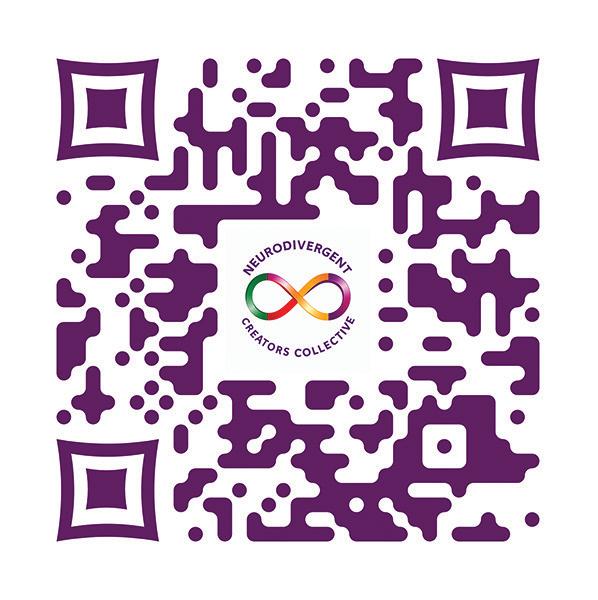
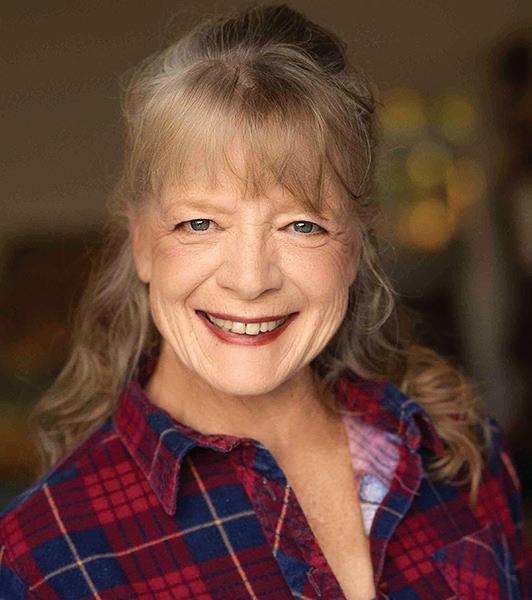

Brian: We also encourage you to subscribe to the Autism Empowerment YouTube channel and to check out all the resources and information available at the AE-NCC section of Autism Empowerment’s website at https://www.autismempowerment.org/programs/aencc.
We highly recommend bookmarking this webpage because we add new free resources and information about upcoming workshops monthly.
Just like each of us, the AE-NCC is a work in progress—and that is part of our strength. By starting with educational workshops, informal gatherings, and supplemental on-demand videos and resource downloads, we are laying a foundation that we hope will grow into a vibrant and supportive creative community where everyone feels welcomed, accepted, and inspired to create. We know there is more to do, and we invite you to join us in shaping what comes next.
As this column appears during National Disability Employment Awareness Month (October), we want to reaffirm our commitment to encouraging and empowering members to bridge the gap between passion and profession. Whether through project collaborations, portfolio-building, mentorship, or skill development, AE-NCC aims to encourage each person to discover their own path and to thrive on that journey.
Whether your goals are professional—working in film, voice over, animation, writing, or publishing—or personal, such as exploring a hobby, building skills, or finding new creative friends to hang out with, there is a place for you here.
Your presence, perspective, and participation will help the AE-NCC grow into what it is meant to be: a supportive collective that celebrates creativity, uplifts voices, and embraces new opportunities to thrive. Join us today!
Start here: www.autismempowerment.org/programs/aencc
Subscribe on YouTube: www.youtube.com/autismempowerment
Sign up for email: https://bit.ly/aenccemail
Follow on Facebook: www.facebook.com/groups/aencc
Take our interest survey: https://bit.ly/aenccsurvey
Contact us directly: gwyn@autismempowerment.org | brian@autismempowerment.org




By Aaron Blackwelder
We’ve all heard the expression, ”It takes a village.” While it’s often used to describe raising a child, this age-old wisdom is especially true for empowering our autistic students. In their journey, the most effective support system is built on a strong partnership between two key players: parents and teachers.
For autistic students, success isn’t just about what happens in the classroom; it’s about the connection between their world at school and their life at home. When parents and teachers work positively together as a team, sharing insights and strategies, they create a cohesive and supportive environment that allows students the opportunity to truly thrive, both academically and emotionally.

This article explores how parents can take the lead in building this crucial partnership and why a collaborative relationship is the key to unlocking a student’s full potential.
Understanding the Student Holistically: Seeing the Whole Child
Teachers see and connect with their students in the structured, academic environment of a school, while parents see their children in multiple environments, including the more relaxed, personal setting of home. Each perspective is valuable.
By proactively sharing insights with each other, parents and teachers gain a more complete understanding of each student’s behavior, interests, and challenges.
What parents can share:
• A student’s sensory sensitivities and how they might affect their comfort in a classroom.
• Specific interests or hyperfocused passions that could be leveraged for learning.
• Strategies that work well at home for managing stress or transitions.
What teachers can share:
• A student’s learning style in the classroom.
• Interactions with peers and how they navigate social situations.
• Academic progress and areas where they might need extra support.
This shared knowledge helps both parties create consistent strategies. For example, if a teacher knows that a student’s sensory needs make large, noisy classrooms challenging, they can work with the parent to implement a plan, like providing noise-canceling headphones or a designated quiet space.
Building this partnership takes effort and a willingness to communicate. For parents, taking the initiative to break the ice and reach out to teachers can set a positive and collaborative tone for the entire school year.
While teachers are often balancing a full class and limited time, a thoughtful, proactive approach from parents is always appreciated.
• Make the First Move: Don’t wait for the teacher to contact you. Send a brief, friendly email at or near the beginning of the school year. Introduce yourself and your child, and express your enthusiasm for a collaborative year. You can also ask about their preferred method of communication (email, phone, etc.).
• Share a “Student Snapshot”: Create a one-page document or email with a quick overview of your child. This can include:
Continued on next page

• Strengths & Interests: What does your child excel at? What are their passions or special interests?
• Sensory Needs: Do they have any sensitivities to noise, light, or textures that a teacher should be aware of?
• Effective Strategies: What strategies work well at home to help with transitions, emotional regulation, or learning challenges?
• Ask Thoughtful Questions: When you communicate, ask specific, open-ended questions. Instead of “How is my child doing?” you could ask, “What is one thing my child seems to enjoy in the classroom?” or “What’s a challenge we could work on together at home?”
• Offer Support and Appreciation: Remember that teachers are a vital part of your child’s support system. Express your gratitude for their hard work. A simple “Thank you for all you do” goes a long way in building a positive relationship.
By proactively reaching out and providing valuable insights, parents can create a strong foundation for a partnership that will benefit their child’s success. This collaboration ensures that everyone is on the same team, working together to empower the student to thrive.
At the end of the day, parents and teachers share similar goals: helping students flourish. When both sides listen, share, and support one another, students benefit from a consistent, caring network that celebrates their individuality and fosters growth. Building this partnership takes effort, but the rewards—for students, families, and teachers—will reap lifetime benefits.
Aaron Blackwelder is a middle school English teacher in the Vancouver Public School District and coaches high school golf in Southwest Washington. He is the co-founder of Teachers Going Gradeless, and an educational contributor to Spectrum Life Magazine. Aaron has been a Washington State English Teachers Fellow, was nominated for Washington State Teacher of the Year in 2019, and is a five-time golf coach of the year. Aaron is a husband and father of two boys on the autism spectrum, who inspire him to become a teacher who meets the needs of all students. Visit www.TeachersGoingGradeless.com
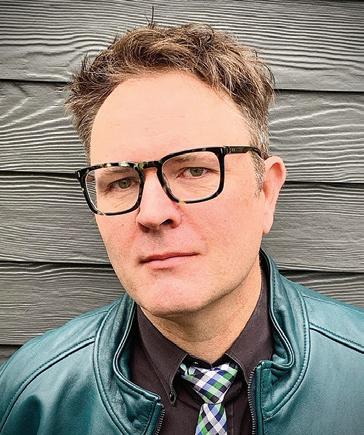
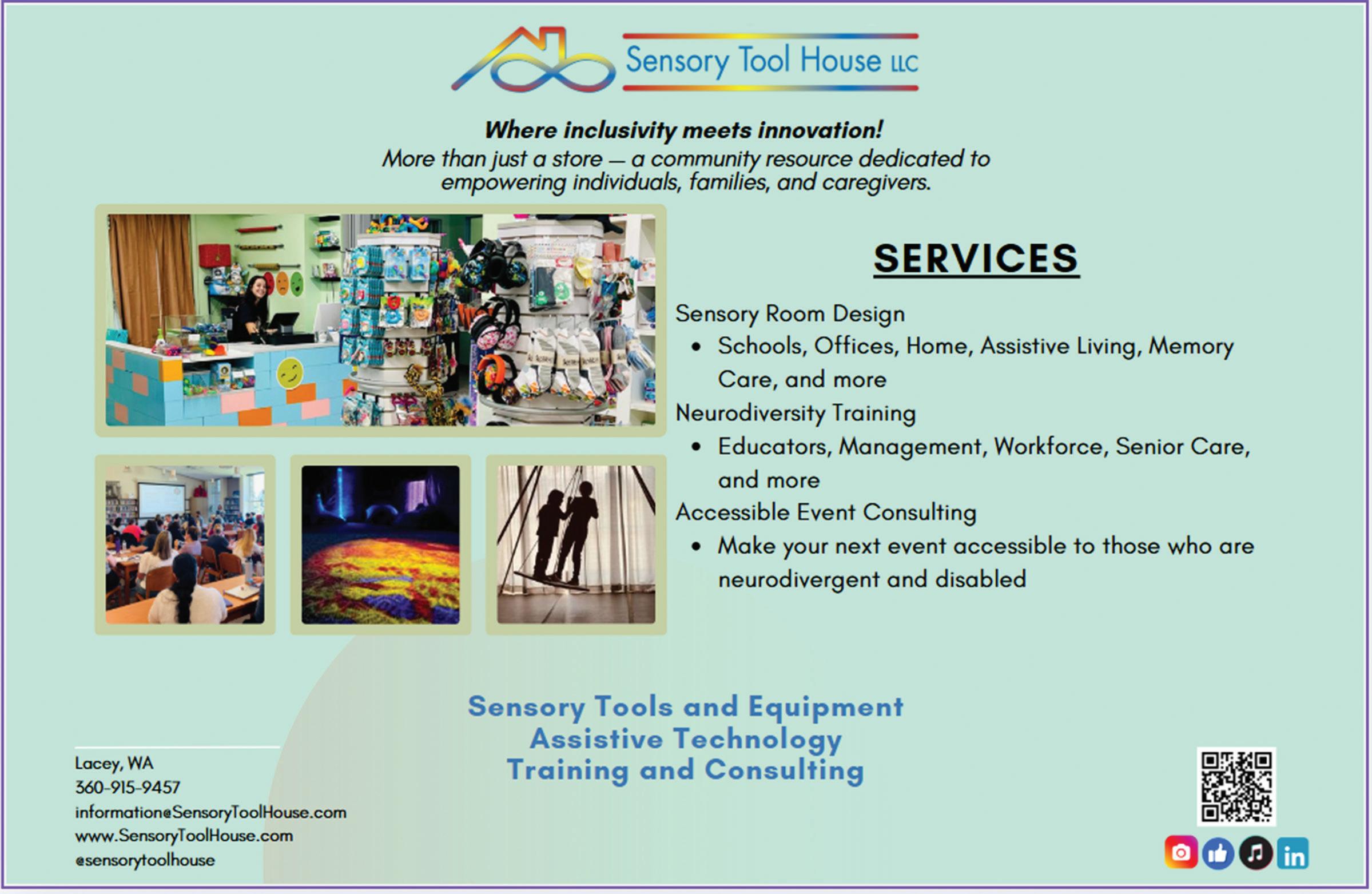
by Diane Wiscarson and Anna Lawler
Have you ever felt completely lost trying to help your child/ student? Do you see them feeling anxious, overwhelmed, disconnected, disorganized, and lacking the motivation to even get started?
As mothers of neurodivergent learners, we know this experience deeply. Our sons, both diagnosed with autism, needed more than accommodations or good intentions—they needed ways to get from point A to point B in understandable and manageable steps. They needed time, teaching in small increments, and lots of support to build skills slowly, at their own pace and level, so those skills could become sustainable habits.
Many years were spent guiding them through the ups and downs of executive function development. That development included building, sometimes from scratch, systems that helped manage time, set goals, self-advocate, and reduce overwhelm.
Today, these young men are both using their painfully developed skills—one while preparing for college and the other engaging in the workforce. Both are using the skills learned to be able to chart their own paths.
Like many parents, neither of us was handed any information, a manual, any understanding of the process, or a clear path to help our boys. As parents, we had to step into multiple and overlapping roles as parent, teacher, coach, cheerleader, advocate, and all-around support.
Over time, the realization came as to what had been missing all along, even by many well-meaning people always trying to help, and that was executive function skills
Executive Function refers to a set of cognitive skills controlled by the brain’s prefrontal cortex—often called the brain’s “control center.” These skills help us regulate our thoughts, actions, and emotions, so we can plan, prioritize, organize, manage time, focus, initiate tasks, and then follow through successfull y.
Executive function skills also help us retain information, adapt to change, advocate for ourselves, and regulate our impulses and emotions.
These are not just school skills—they are life skills, which will be needed and used in almost every aspect of daily life. And yet, for neurodivergent children and those with learning differences, executive function skills don’t always just develop naturally. Unfortunately, executive function skills are rarely taught explicitly in schools.
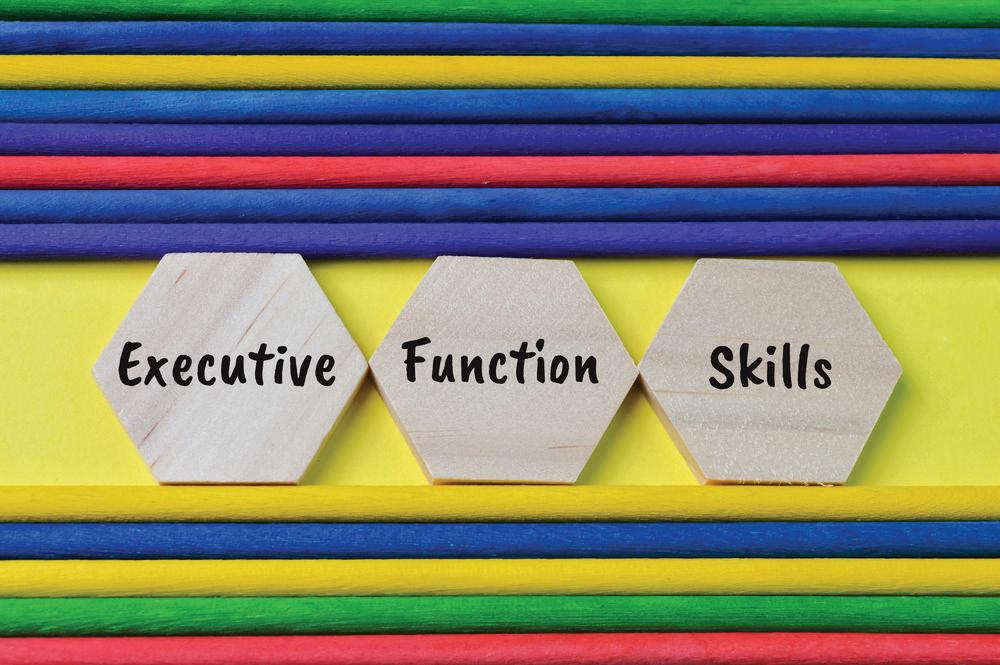
As a result, children are often labeled as “lazy,” “unmotivated,” or “defiant,” when in reality, they are overwhelmed, undersupported, often shamed or blamed, and missing critical tools to be successful. These misunderstandings can erode self-esteem and confidence, decrease independence, and increase mental health concerns over time.
In special education, the focus is often on what students can’t do. And unfortunately, this is often framed as what a student “won’t” do, with no understanding that the student is not currently able to do what is requested.
It is important that we reframe this—to focus on what a student can do when given understanding, patience, the right tools, encouragement, and support.
We live in a world full of demands, deadlines, often unclear communication, and expectations, which are often unwritten or vague. Each person and student is unique, but here are some common ways executive function challenges may appear:
• Requires repeated reminders to get started on a task or follow a routine (even if familiar)
• Needs tasks broken down into manageable parts
• Procrastinates or underestimates how long tasks will take
• Overwhelmed by multiple tasks and doesn’t know where to begin
• Cannot keep track of assignments at school or tasks at home
• Frequently runs late or oversleeps
• Has a disorganized backpack and often loses items
• Gets easily distracted and struggles to complete tasks
• Becomes easily frustrated and gives up quickly
• Doesn’t ask for help when struggling
Continued on next page
Because executive function skills often aren’t taught in school, it’s important to find outside resources that can support your student’s growth. Whether you’re a student, parent, teacher, or professional, each of us has a role in helping students develop these critical skills.
1) Start by recognizing and reinforcing the efforts your student makes by:
• Using (and maybe jointly designing) helpful methods for managing tasks
• Showing awareness of their strengths
• Understanding and validating areas of struggle
• Perseverance through non-preferred tasks
• Asking questions to gain understanding
• Learning by watching how others manage their time and responsibilities
2) Build a Visual Schedule
Start small and add to it over time. Place it somewhere visible and easy to reference daily and let your student participate in the development of the schedule.
3) Practice Time Management
Use a timer to help your student estimate how long a task will take to complete. Compare the estimate with the actual time spent. This builds awareness of how long different activities take and helps them learn when breaks are needed.
4) Write It Down
Whether your child prefers to use index cards, a paper planner, or a digital tool, encourage your student to write things down, in as much detail as they can. Getting tasks out of their head and into a plan helps reduce overwhelm and improves follow-through.
In Summary
Executive function skill-building takes a village. Parents, teachers, mentors, friends, students, and professionals must work together to provide students with consistent, individualized support across all settings. Unfortunately, many classrooms don’t have the resources to offer the 1:1 support that some students require.
That’s why collaboration and community are so important. By sharing best practices, evaluating each student’s needs, and—when needed—seeking additional help, we can reduce the pressure on children and their parents, and empower our students to lead fulfilling, successful, and independent lives.


• Customizing Visual Schedules for Every Learner (Life Skills Advocate): https://bit.ly/customizingvisualschedules
• Time Management Techniques (Smart Kids with Learning Differences): https://bit.ly/efskillstimemgmt
• Pomofocus Timer Tool: https://pomofocus.io/
Planners and the “Get Ready, Do, Done” Model
• Free Digital Planner (MyHomeWork App): https://myhomeworkapp.com/
• Ideal Week Template Printable (EF Specialists): https://bit.ly/idealweekstudent
• Get Ready, Do, Done model by Sara Ward (Calgary Board of Education): https://bit.ly/otgetreadydodone
• Get Ready Do Done model by Sara Ward (National Council for Special Education) https://ncse.ie/wp-content/uploads/2025/01/Get-Ready-Do-Done.pdf
Diane Wiscarson is the founding attorney of Wiscarson Law, the only firm in Oregon with a primary practice area of special education law for families, and has represented thousands of families of special education students in Oregon and Washington.
Anna Lawler is a Portland-based consultant with a background in corporate leadership and parent mentoring, guiding families and students through IEPs, executive function skill development and goal setting. Find more information at wiscarsonlaw.com and lawlercoaching.com
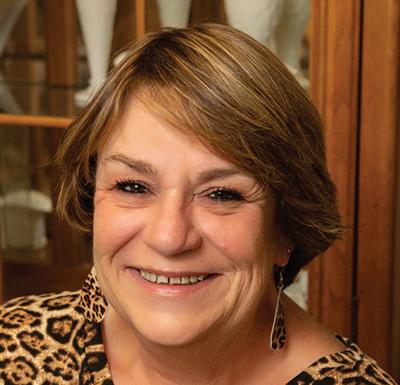




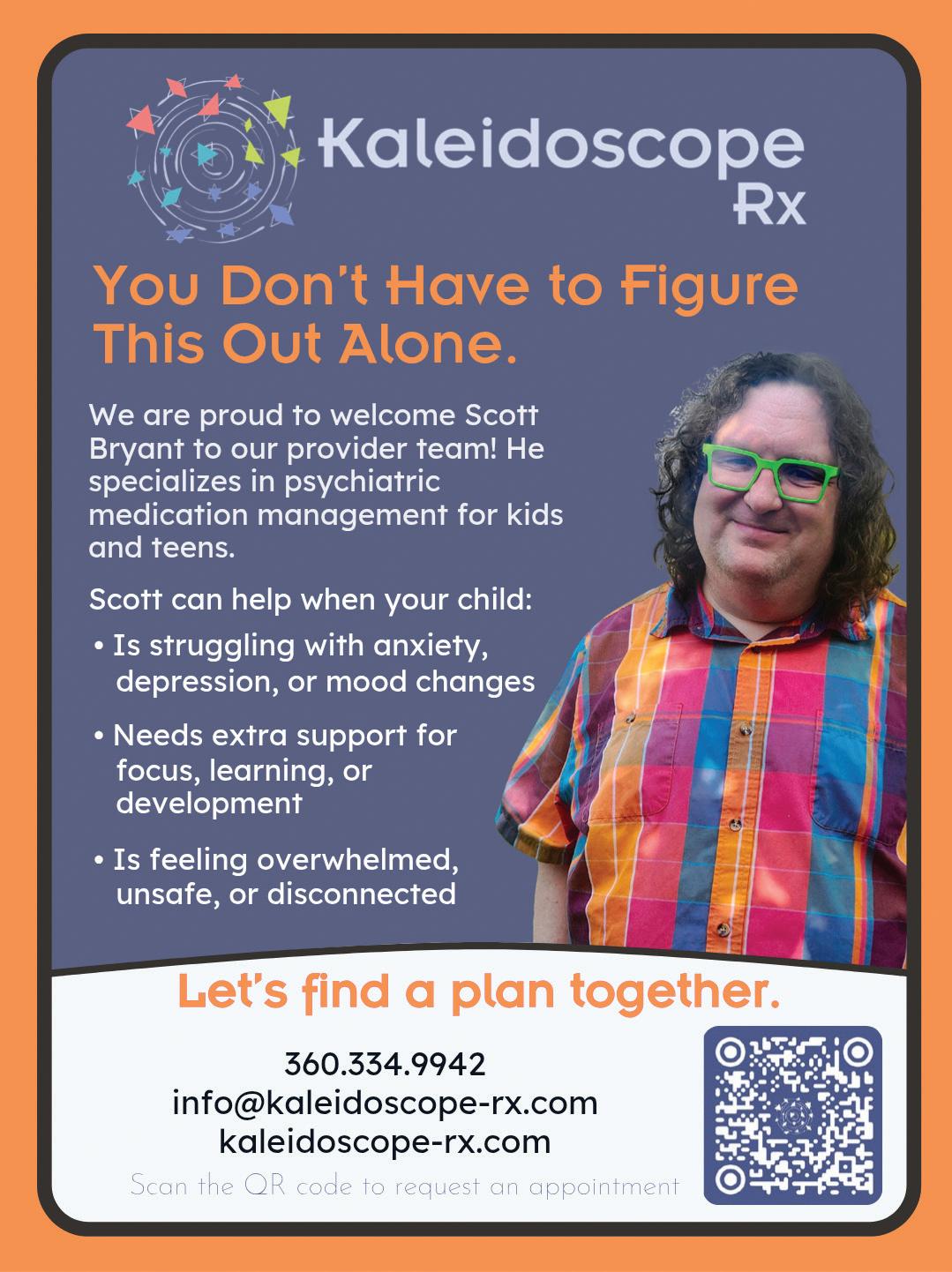
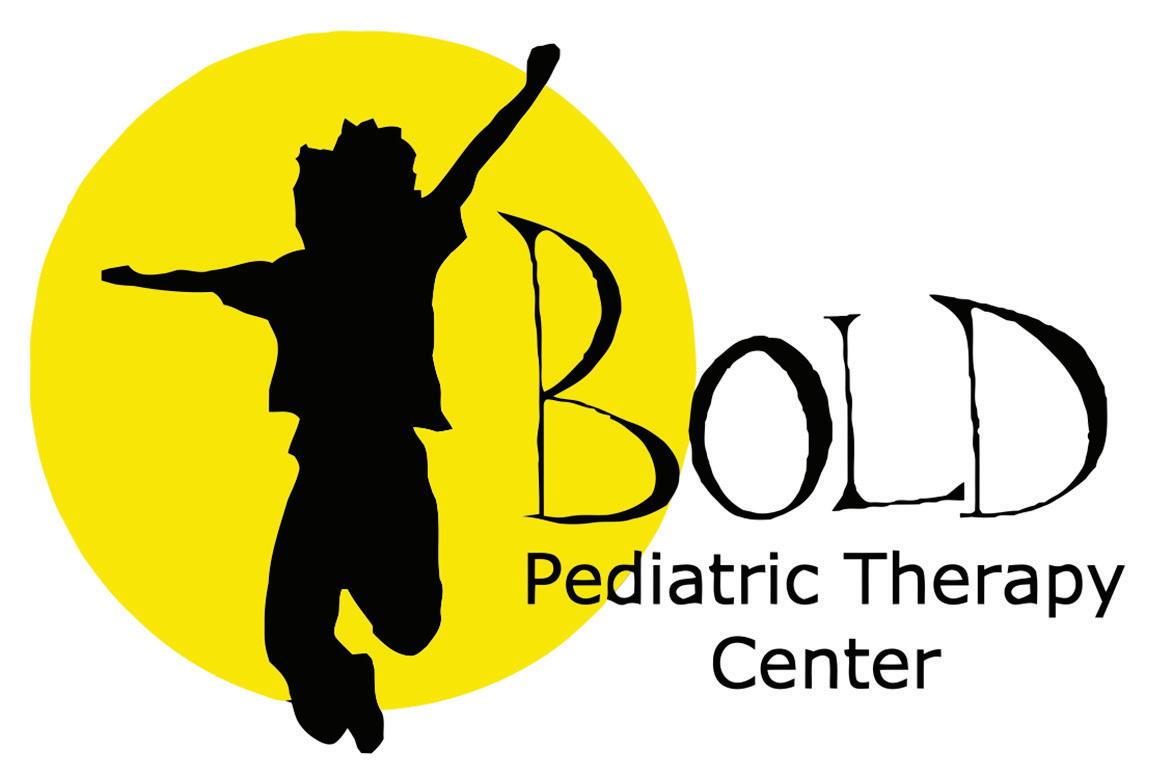

By Ryan Lockard, CSCS*D, CSPS*D
When you hear the word “fitness,” what comes to mind? For some, it’s the image of a busy gym with dumbbells clinking and cardio machines humming. For others, it’s about pursuing athletic goals—faster times, heavier lifts, higher jumps.
For many people we serve at Specialty Athletic Training, fitness means more than just physical strength. Movement is about freedom, being able to do everyday tasks on your own, and feeling confident to handle what the world throws at you.
Movement is a pathway to independence. I have seen this repeatedly over my years of training clients in the disability community.
The fitness industry often talks about “functional training,” which refers to exercises that mimic the movements we do in daily life. While it is a trendy term, for the disability community, it is far more than a buzzword. It is the bridge between where someone is now and where they want to be in their everyday life.
Think about the movements you perform without much thought. You bend to tie your shoes, reach for a cup on a high shelf, stand up from a chair, and step off a curb. Each of these actions is built on fundamental movement patterns such as squats, hinges, pushes, pulls, and balance work.
When someone struggles with those patterns due to a disability, injury, or health condition, their independence can be limited. When we intentionally strengthen those same patterns in the gym, we give them the tools to move more freely in the real world.
One of my favorite moments as a trainer was hearing a story about a client struggling to independently walk up and down stairs. After several sessions targeting building strength and confidence, his mom reported that he boarded the school bus alone for the first time.
From the outside, it may seem like a small victory. I assure you that this wasn’t a simple, small victory for this child but marked a significant increase in independence and self-confidence.
Small wins in functional fitness add up to life-changing independence.
Physical capability is only half the story. Independence is also deeply tied to confidence and self-belief.
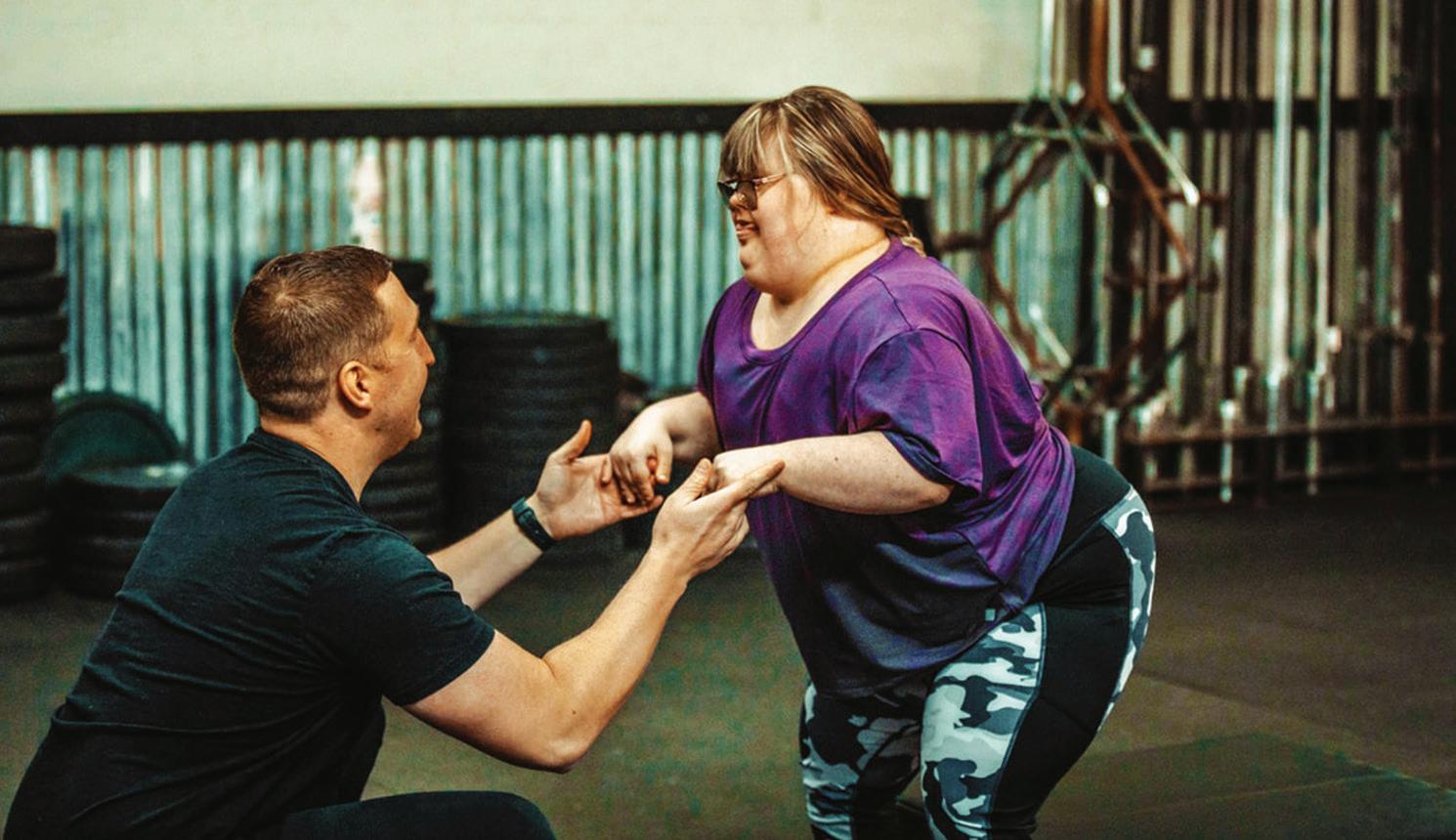
When a person realizes they can do something on their own, something shifts internally. They start to see themselves differently. They begin to approach other challenges in and out of the gym with a mindset of possibility rather than limitation.
That confidence can ripple through every area of life. It might mean trying a new hobby or participating more fully in community activities.
When building a strength program, it is important to consider how increasing an individual’s fitness could lead to an increase in independence.
For one person, it might be the ability to transfer from their wheelchair to a bed without help. For another, it might be carrying their own backpack to school. For someone else, it could be having the stamina to walk around a grocery store without needing to rest.
Once we understand that goal, we reverse-engineer the training plan. Squats can mimic sitting and standing. Farmer walks teach safe lifting mechanics for carrying groceries. Core and balance work improve stability for safely moving around the house or community. Every exercise has a purpose that goes beyond the gym walls.
In mainstream fitness, progress is often measured by numbers such as weight lifted, miles run, or calories burned. For our clients, we measure success differently. We invite you to do so as well with your own fitness goals.
• Can you complete the task you wanted to do on your own?
• Can you participate in an activity you once avoided?
• Do you feel more confident in your ability to move through the world?
These are the metrics that matter. At the end of the day, independence is the ultimate personal record.
If you work in fitness, I challenge you to expand your definition of who belongs in your gym. Learn how to adapt equipment, modify movements, and meet people where they are. Create environments that are physically and emotionally safe for all individuals, regardless of their abilities.
You might think you are just helping someone move better, but you could be helping them live better.
Movement is more than exercise. It is more than reps and sets. For the disability community, movement is a lifeline to independence, confidence, and opportunity.
Every time a client leaves our gym able to do something they could not do before, whether it is climbing stairs, opening a jar, or standing a little taller, it reinforces why we do what we do.
Independence is not built overnight. It is built movement by movement and choice by choice until you or the person in front of you can proudly say, “I’ve got this.”

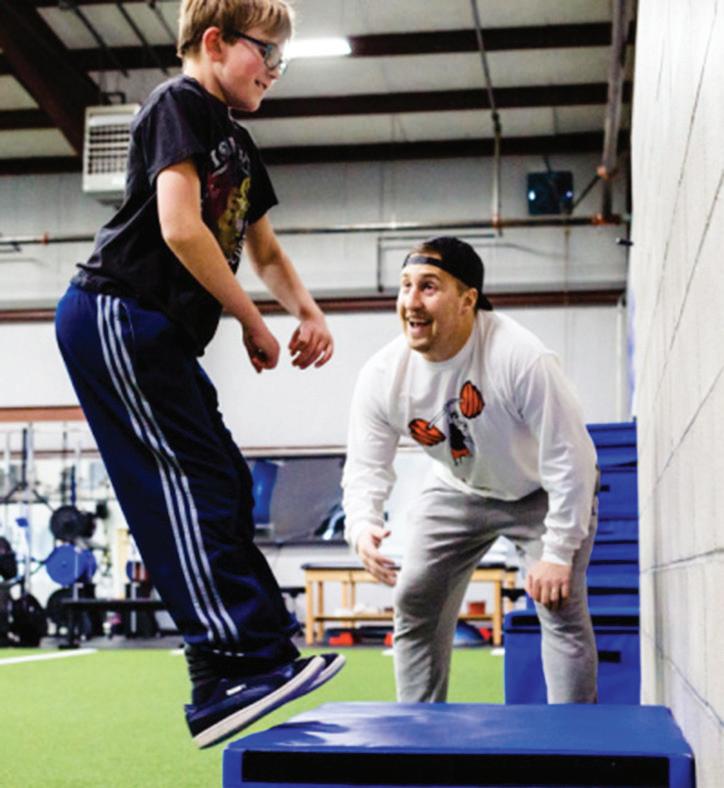
Ryan Lockard is the Founder and CEO of Specialty Athletic Training, a personal training company in the Portland Metro area, Lane County, and Central Oregon specializing in fitness programs for children and adults with disabilities. He is the NSCA Oregon State Director, a Certified Strength and Conditioning Specialist (CSCS) and a Certified Special Populations Specialist (CSPS).He has served on the board of directors for the Autism Society of Oregon and the Autism Society of America. He can be reached at Ryan@SpecialtyAthleticTraining.com or www.SpecialtyAthleticTraining.com

In this column, Spectrum Life editor Karen Krejcha answers frequently asked questions about autism-related topics in our community.
Dear Spectrum Life,
I am tired of news conferences, leaders, and media outlets that treat autism like a crisis or a burden. But I’m also frustrated when honest concerns, like medication reactions, regression, or family struggles are dismissed. How can our community talk about different levels of need, affirm autistic lives, and come together instead of being so divisive? Keith in Camas
Dear Keith,
I appreciate you putting words to something so many of us are feeling. It’s heavy, real, and often painful: the gap between wanting safe, honest spaces to share struggles, and rejecting rhetoric that dehumanizes autistic people. In the wake of recent public remarks at a national level, many in our community feel both wounded and wary.
Let’s walk through this together—the history, the hurt, and the hope.
A little history to anchor us
Autism didn’t suddenly emerge in the 21st century. What we now call autistic traits have existed long before diagnostic labels. Scholars have documented early case descriptions, and many advocates point out that differences in communication, sensory experiences, and thinking styles have always been part of human diversity.
If you want to go deep into neurodivergent history, Steve Silberman’s book NeuroTribes traces how autism was often hidden or pathologized—not because it was new, but because society lacked the language and acceptance to describe it. Autism has been part of humanity for many generations.
This makes it essential to resist framing autism as a catastrophe or an epidemic caused by modern medicines. Such framing doesn’t just fearmonger—it isolates families, stigmatizes autistic people, and pushes aside the voices of those of us who live these realities every day.
Real wounds, real questions.
1. Medication reactions, regression, and lived trauma
Some families believe their child experienced an adverse reaction to a vaccine, medication, or other intervention that seemed to coincide with developmental regression around 18 months. For many, this regression preceded an autism diagnosis.
These stories deserve to be heard with empathy, not dismissal. While large studies don’t support broad vaccine–autism links, the lived experiences of sudden regression are powerful and painful. Correlation isn’t causation, but compassion is always the right response.
Rather than arguing families into silence, we can say: “We don’t yet understand all of the biology, but your experience is real. Let’s push for better science, more nuanced care, and listening hearts. In the meantime, let’s provide resources for your child and for you.”
2. The spectrum is wide. Needs differ.
Autistic people vary dramatically in how much support they need and when. Some require daily living assistance; others are independent but wrestle with sensory overload or social fatigue.
Public discourse often flattens and incorrectly minimizes autism into labels like “high functioning” or “low functioning,” masking diversity, ignoring that people’s needs aren’t linear, and making people of all profiles feel unseen— either “not autistic enough” or “too much of a burden.”
Support is not shameful. Independence is not the only measure of worth.
Parents sometimes feel dismissed by autistic-affirming spaces. Autistic adults often feel erased or blamed in parent-led groups. On social media, the loudest extremes often drown out bridge-builders. It’s one of the biggest challenges that Autism Empowerment experiences when trying to bring others together.
This division weakens our shared voice. When public leaders erase or ignore autistic voices, all of us—parents, caregivers, professionals, and autistic people—lose power in research, policy, and public perception.
Continued on next page
We must move toward respectful conversation, not more wall-building. That means facing tough topics with dignity, humility, and listening.
Listening to feedback from autistic adults.
Many autistic adults describe stigmatizing words and characterizations as an assault: “I’m not a disease. I’m a person.”
They push back on “burden” narratives, pointing out that what brings value is not eliminating autism but offering support. Many have sympathy for parents’ pain and responsibility, but still ask for empathy and respect.
Too often, families and autistic adults are cast as adversaries. In truth, most people want the same thing: dignity, compassion, and a world where autistic individuals can thrive. We cannot afford to negatively compete in the oppression Olympics. Our struggles are real, but support should not be a zero-sum game. We all deserve to thrive.
There’s also recognition that autistic bodies and brains may process medications differently. This is not speculation—it’s a lived reality many families report, and we’ve written about this before in Spectrum Life Magazine. Accepting this possibility doesn’t validate every treatment claim; it calls for research that respects individual variability.
How do we foster community instead of division?
Here are practical steps for families, autistic adults, and allies:
1. Hold courageous conversations.
• Create small groups of parents and autistic adults with ground rules: listen first, affirm dignity, no assumptions.
• Use prompts like: “What scares you most about this issue?” or “What would help you feel safe sharing your personal experience?”
• Acknowledge grief and anger before moving to policy or supports.
• Practice compassion with each other’s experiences.
2. Use language that bridges, not divides.
• Ask each person how they prefer to be addressed and described. Respect their choice.
• Pair talk of challenges with affirmations: “Yes, there are barriers—and your life matters.”
• Avoid framing autism as something to be “prevented” or “cured” in blanket terms.
3. Differentiate needs without hierarchy.
• Recognize that some need more support than others.
• Don’t equate more support with less value.
• Validate the hard days. Celebrate progress in small steps.
4. Press for inclusive research and policy.
• Advocate for studies on diversity within autism— metabolic differences, genetics, varied paths.
• Demand autistic representation in research and policy, across all levels of need. Nothing about us without us.
• Support funding for education, housing, healthcare, mental health, recreation, respite, and employment.
5. Teach children resilience language.
Encourage trusted adults such as parents, teachers, and counselors to step in when cruelty arises. If your child is bullied or confused by what they hear, these simple phrases may help:
• “I am different, and that’s okay. Everyone is uniquely made.”
• “Sometimes people say things they don’t understand. My brain works differently.”
• “I have strengths and gifts, and I deserve kindness.”
Bringing it all together through Autism Empowerment’s Four Pillars
• Accept every autistic person—not for what they can or cannot do, but because they are human and worthy of belonging.
• Enrich lives through supports, lifelong learning, and opportunities for growth.
• Inspire discussion by elevating diverse stories of thriving, struggling, innovating, and teaching.
• Empower change by advocating for voice, access, and inclusion in schools, community and national policy.
In closing, Autism Empowerment invites all Spectrum Life readers—parents, caregivers, autistic adults, and allies—to engage in conversations with courage, respect, grace, and kindness. Bring your pain and your hope. Share your doubts and your dreams.
When we speak from the heart with openness and not bitterness, we create space for healing, growth, and transformation.
Yes, the divisions we currently face are sharp. But with humility, courage, and love, together we can weave something stronger: an empowered and kind community that honors autistic lives without ignoring the real struggles of families. Love one another.

Karen “Fall Girl” Krejcha is co-founder of Autism Empowerment, where she serves as Executive Director. She is Editor of Spectrum Life Magazine, host of the Autism Empowerment Podcast and founder of Spectrum of Voices LLC. Karen was diagnosed on the autism spectrum in her 40s, after the diagnosis of her two children. She has been married to co-founder John Krejcha for over 33 years and is devoted to being a loving wife, mom, daughter, and ambassador of acceptance and empowerment worldwide. https://linktr.ee/karenkrejcha
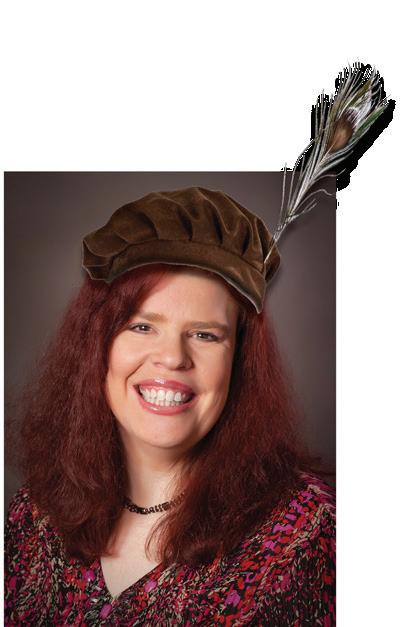
by Lyric Rivera
Though Autism is considered “a lifelong neurodevelopmental difference,” I didn’t know that I was Autistic for most of my life. Despite being Autistic my entire life, I only found out about my Autistic brain just over nine years ago, a few months shy of my 30th birthday.
In addition to being Autistic (and multiply NeuroDivergent in other ways), I am also Queer. I’m Nonbinary and Gender-Fluid, identities that fall under the transgender and gender-nonconforming umbrella.
I’m also Pansexual (meaning the genders of other people don’t impact whether I’m attracted to them or not, and I’m often most attracted to people who don’t fit neatly within modern society’s gender norms). Additionally, I am Polyamorous (because the whole idea of monogamy never made sense to or for me).
While I didn’t know about my own NeuroDivergence (or even about the concept of NeuroDiversity) for most of my life, I did, however, know that I was Queer, starting from a very young age (possibly because our society had more to say about Queer existence than about Autism and NeuroDivergence over the years when I was growing up).
I knew I “wasn’t a girl” by the age of 4 or 5, but didn’t know what to call myself because back then, when the internet wasn’t what it is today, and I was still very isolated in my part of the world. I didn’t realize being Nonbinary was an option.
Growing up, I encountered Trans Binary people, and I always related to them and their experiences. However, without knowing that one can be Trans and Nonbinary, I didn’t have the language to explain my personal experiences around gender.
Similarly, not understanding NeuroDivergence (the concept that brains can diverge from one another in various ways) and NeuroDiversity (the concept that humans experience a broad spectrum of experiences based on naturally occurring variations in brain and nervous system types) left me unable to describe those experiences, despite them significantly impacting my life.
Here, in Texas, where I’m from, the people around me (outside of my own family) had a lot to say about Queer people (and unfortunately, much of it wasn’t good).
Words I knew growing up to describe Queer experiences were very limited and included Trans, Gay, Lesbian, Bisexual, and Queer, but not much else.

In middle school, I started by calling myself “a Lesbian,” because I was AFAB (assigned female at birth) and the first people I found myself attracted to were women. Then, when I found myself attracted to the occasional man, I changed my identity to “Bisexual”.
I had no word to describe my rejection of monogamy (which blossomed by the time I was just 11 years old), leading the people around me to label my tendency to not want to “pick just one partner” with all kinds of derogatory names and sexualized ideas.
Without knowing that Polyamory (the ethical, consensual practice of having multiple romantic relationships at the same time) was a thing, I didn’t realize other people had similar experiences and feelings.
In my “not knowing Polyamory was an option,” I even took on some of these derogatory labels to describe my struggles with society’s tendency to enforce monogamy (calling myself a “Proud Slut”).
To simplify things growing up (with my limited vocabulary), I also often called myself “Queer” as a catch-all term that described all the ways I didn’t fit into society’s expectations around gender, attraction, and relationship norms.
Years later (when I was in my early 30s), after connecting to the global Queer community online, I discovered new labels and terms that would more accurately describe my experience (Pansexual, Polyamorous, Gender-Fluid, and Nonbinary).
With a new, more accurate language, I was finally able to fully express myself (and my Queer experiences) without reverting to harmful descriptors (that objectify and put people like me down).
Continued on next page
I owe this discovery (learning the correct labels for my multiple Queer experiences) to that Autism diagnosis I’d received only a few years prior, because it was this initial discovery (that I was and always had been Autistic) that led me to start introspecting and questioning in ways I’d never done previously.
Because I was diagnosed Autistic (in a time of mental and physical health crisis), I started to re-evaluate everything in my life, picking apart personas I’d projected into the world, intent on discarding anything that had been forced upon me by society that wasn’t in alignment with my true feelings or desires.
I would ask myself (before making almost any decision), “Am I doing this because I feel it’s expected of me, or because it is really something that I truly want to do?”
It was painful to realize how many things in my life had been done out of compulsion, fear, shame, or guilt, and how unaligned I’d become with my own internal compass.
Little by little, I started chiseling away at the NeuroNormative mask I’d carefully constructed over the years, lobbing off all of the unrealistic expectations that had been thrust upon me by society throughout my life.
My mask had grown so heavy that I could no longer keep up with it, and when I learned about my Autistic mind, I finally gave myself permission to put that heavy burden down because I realized that the goal of “normalcy” had always been cruel and out of reach.
As I continued to search for my most authentic self, questioning all the ways I performed “normalcy” as a NeuroDivergent person, I eventually was left facing the fact that much of how I presented gender to the world also felt compulsory.
Parallel Journeys: “Coming Out of Closets” and “Disclosing NeuroTypes”
Coming out of “the Autism Closet” (for me) was much like coming out of the closet as a Queer person.
• The Shared Process of Self-Discovery: Both experiences involved profoundly personal journeys (of internal understanding, self-discovery, and self-acceptance), accepting identities that diverged from societal norms.
• The Decision to Share: Both experiences left me vulnerable to rejection, misunderstanding, and stigma from others when deciding to (or not to) disclose the different parts of myself.
• The similar fears: being treated differently, invalidation (“it’s just a phase”; “everyone’s a little Autistic”).
• The Need for Safety and Trust: Both types of disclosure require a safe and trusting environment. You don’t tell “just anyone”; you tell people you hope will support you.
• It’s Not a One-Time Event: The process of “Coming out Autistic” and “Coming out as Queer” are both ongoing, lifelong experiences of choosing when, how, and to whom to reveal these identities. We will often disclose to different people in various ways throughout our lives.
More Likely to Be Queer
Being a multiply NeuroDivergent Queer person from Texas (where most of my Queer peers were still in the closet when I was growing up), one thing I immediately noticed upon becoming immersed within Autistic and other NeuroDivergent spaces was “how many NeuroDivergent people also seemed to be Queer.”

Throughout my life in Texas (and in most spaces I entered), I’d grown into the habit of assuming most people were cis/straight unless they told me otherwise. However, eventually, after spending enough time in Autistic spaces, I noticed that, among Autistic and other NeuroDivergent people, the opposite often seemed to be true.
Often, in NeuroDivergent spaces, cis/straight people get to experience what it’s like to be in the minority. Numerous studies support this observation with data.
Over the years, research has consistently shown that Autistic people are more likely to be 2SLGBTQIA+ (a term that encompasses a wide range of attractions/orientations and gender identities) when compared to our non-autistic peers.
Here are key findings from a few of those studies:
Overlap with Attraction and Orientation
• Autistic people are about 8 times more likely to identify as asexual and “other” sexualities than our non-autistic peers.1
• Autistic men are 3.5 times more likely to identify as bisexual, and Autistic women are 3 times more likely to identify as homosexual.1
• One study noted that Autistic adolescents were more accepting of homosexuality and reported more same-sex attraction.2
Continued on page 50
Overlap with Gender Diversity
• Gender-diverse people are 3–6 times more likely to be Autistic than cisgender people.3 4
• An Australian survey found 22.5% of Transgender youth were diagnosed Autistic compared to 2.5% within the general population.5
Mental Health Correlations
• Queer youth who are also Autistic have been reported to have over 50% greater odds of attempting suicide in the past year compared to those who are not Autistic.6
NOTE: This disparity is primarily due to the compounded stigma, discrimination, and lack of support faced by those who exist at the intersection of multiple marginalized identities.
These studies highlight the critical need for inclusive support, affirming healthcare, and further research around the NeuroDiversity-2SLBGTQIA+ intersection.
Understanding the Intersection: Why These Communities Overlap
People often ask, “Why are so many Autistic and other NeuroDivergent people Queer?”
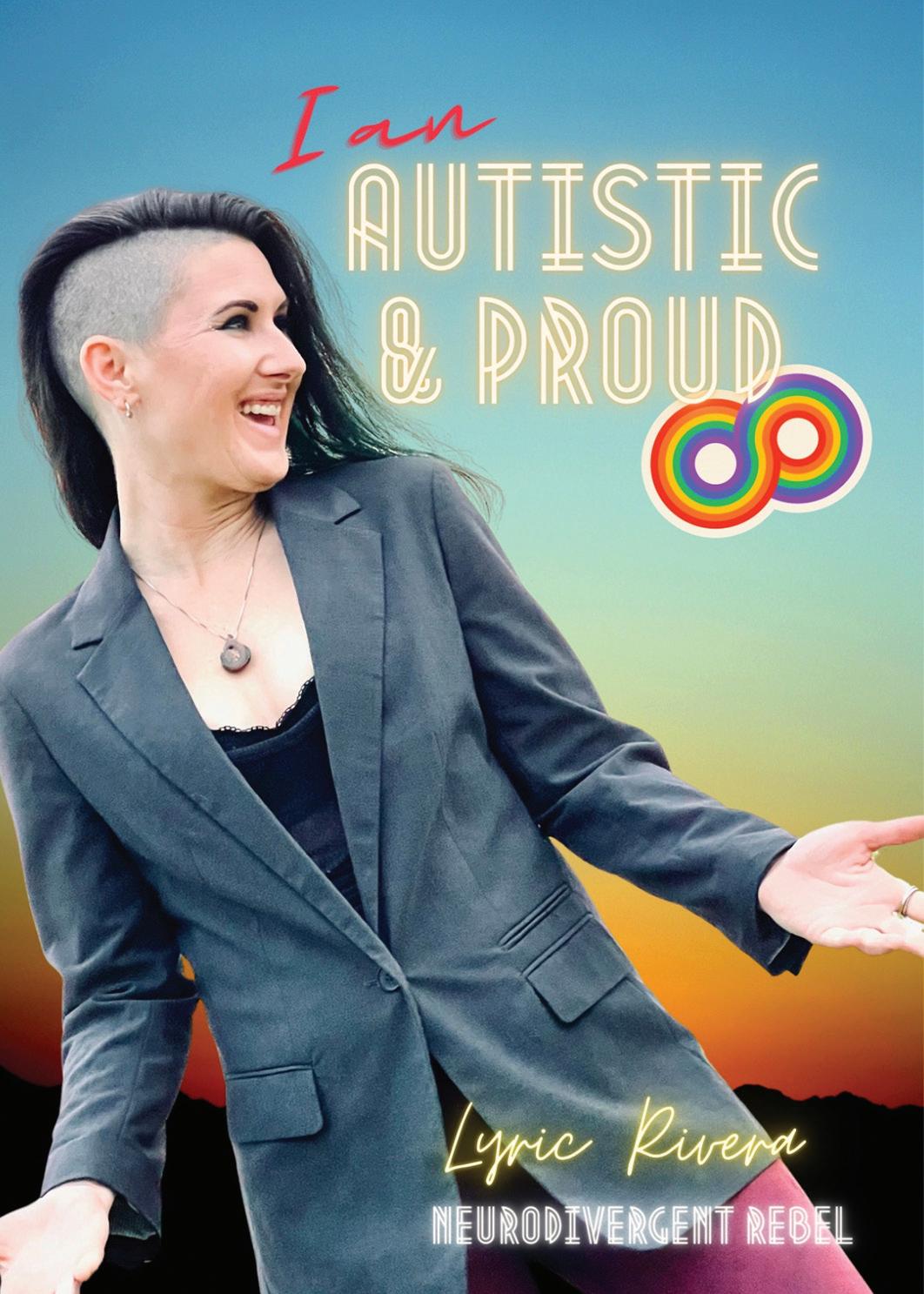
We can speculate all day about “why so many NeuroDivergent people are Queer,” but, in my opinion, this question is too often used to distract from asking more meaningful questions that could actually help Queer and NeuroDivergent people.
Maybe it is because Autistic people are less influenced by social norms and expectations around gender and sexuality, allowing us to explore and define our identities more freely.
Maybe it is because we experience and interpret gender, attraction, and social bonding in unique ways (that don’t fit traditional categories).
Maybe there aren’t really “more Queer Autistic and NeuroDivergent people”... maybe there are just more of us who see no point in staying in our closets.
Both my NeuroDivergence and my Queerness (and all the layers within) are things society has pushed me to hide because outsiders view these traits as “deviant,” diverging from a norm (a norm I don’t believe exists outside of the current social constructs that we use to describe the world around us).
Perhaps more of us are aware and openly Queer due to already being ostracized due to our NeuroDivergence.
NeuroDivergent people are often seen as “strange” or “peculiar” (the original meaning of the word Queer) by people in the world around us. Maybe, we don’t feel a need to hide our Queerness to protect an image of normalcy that has always been out of reach for us.
Normal is NOT a word people use to describe me—”Strange,” “Odd,” “Rebel,” “Weirdo,” “Eccentric,” but rarely “normal.” Since I never held the idea that I was “average” or “normal”, I never clung to “normalcy” and being Queer was business as usual for me—just another way I stood out.
There are many theories about why so many NeuroDivergent People are Queer, but what matters is that NeuroDivergent Queer people are here, there are a lot of us, we are not going anywhere and we need the support of the people around us
What’s next?
1. Listen to Understand, Not to Respond: Practice listening to understand, instead of listening to respond. Believe people when they share their experiences (without immediately trying to “fix” or question them).
2. Separate “Your Stuff” from Theirs: Acknowledge your own fears or concerns (perhaps from a lack of understanding), but work through them separately with a therapist or support group, not by placing your burdens and hang-ups on Queer and/or NeuroDivergent people.
3. Educate Yourself Proactively: Don’t make your NeuroDivergent/Queer friends and loved ones your sole educators on NeuroDivergent or Queer issues. Use reputable sources such as Autistic Self Advocacy Network, GLSEN, PFLAG, The Trevor Project, and others that freely educate on the issues affecting NeuroDivergent and Queer people.
Continued on next page
NeuroQueer Intersections and Why Normal is a Lie, continued from
4. Use Clear, Direct Language: Ambiguity can be anxietyinducing for Autistic people. Be clear in your support: “I love you,” “I believe you,” “Thank you for telling me.”
5. Love the Whole Person: affirm both people’s NeuroType(s) and their Queer identity as integral, valuable parts of who they are.
For Queer Autistic and other NeuroDivergent people
1. Your Identity is Valid: Your experience is real. You don’t have to choose between being autistic/NeuroDivergent and being Queer. In fact, these identities often coexist.
2. Finding Your Community: It’s okay if navigating social spaces is tricky. Look for local NeuroDiversity-affirming 2SLGBTQIA+ groups or online communities where you can connect with others at your own pace.
3. Build Self-Advocacy Skills: It’s okay to set boundaries and ask for what you need (whether it’s using specific pronouns, needing communication in writing, refusing to engage with people who are harmful or dismissive of your reality and lived experiences, or avoiding overwhelming environments).
4. Practice Celebrating Your Strengths: Your unique perspective is a gift. Your authenticity is where you shine. Learn to love and celebrate what makes you “you” and to set down what (or who) other people want you to be.
Normal is a setting on the washing machine, not a way to live.
Your job isn’t to become “normal.” Your job is to become more fully and authentically yourself, regardless of what is expected by others.
References:
1. University of Cambridge, “Autistic Individuals Are More Likely to Be LGBTQ+.” University of Cambridge, 20 Sept. 2021 https://bit.ly/uoclgbtq
2. Hillier A, Gallop N, Mendes E, Tellez D, Buckingham A, Nizami A, OToole D., LGBTQ + and autism spectrum disorder: Experiences and challenges. Int J Transgend Health 2019 Apr 22;21(1):98-110. https://pubmed.ncbi.nlm.nih.gov/33005905/
3. Cooper, K., Butler, C., Russell, A. et al. The lived experience of gender dysphoria in autistic young people: a phenomenological study with young people and their parents. Eur Child Adolesc Psychiatry 32, 1655–1666 (2023). https://doi.org/10.1007/s00787-022-01979-8
4. Warrier V, Greenberg DM, Weir E, Buckingham C, Smith P, Lai MC, Allison C, Baron-Cohen S. Elevated rates of autism, other neurodevelopmental and psychiatric diagnoses, and autistic traits in transgender and genderdiverse individuals. Nat Commun. 2020 Aug 7. https://pmc.ncbi.nlm.nih.gov/articles/PMC7415151/
5. Strauss, P., Cook, A., Winter, S., Watson, V., Wright Toussaint, D., Lin, A. (2017). Trans Pathways: the mental health experiences and care pathways of trans young people. https://bit.ly/transpathwaysreport
6. Mental health among autistic LGBTQ youth | the trevor project. (n.d.). https://bit.ly/trevorprojectautismlgbtqyouth
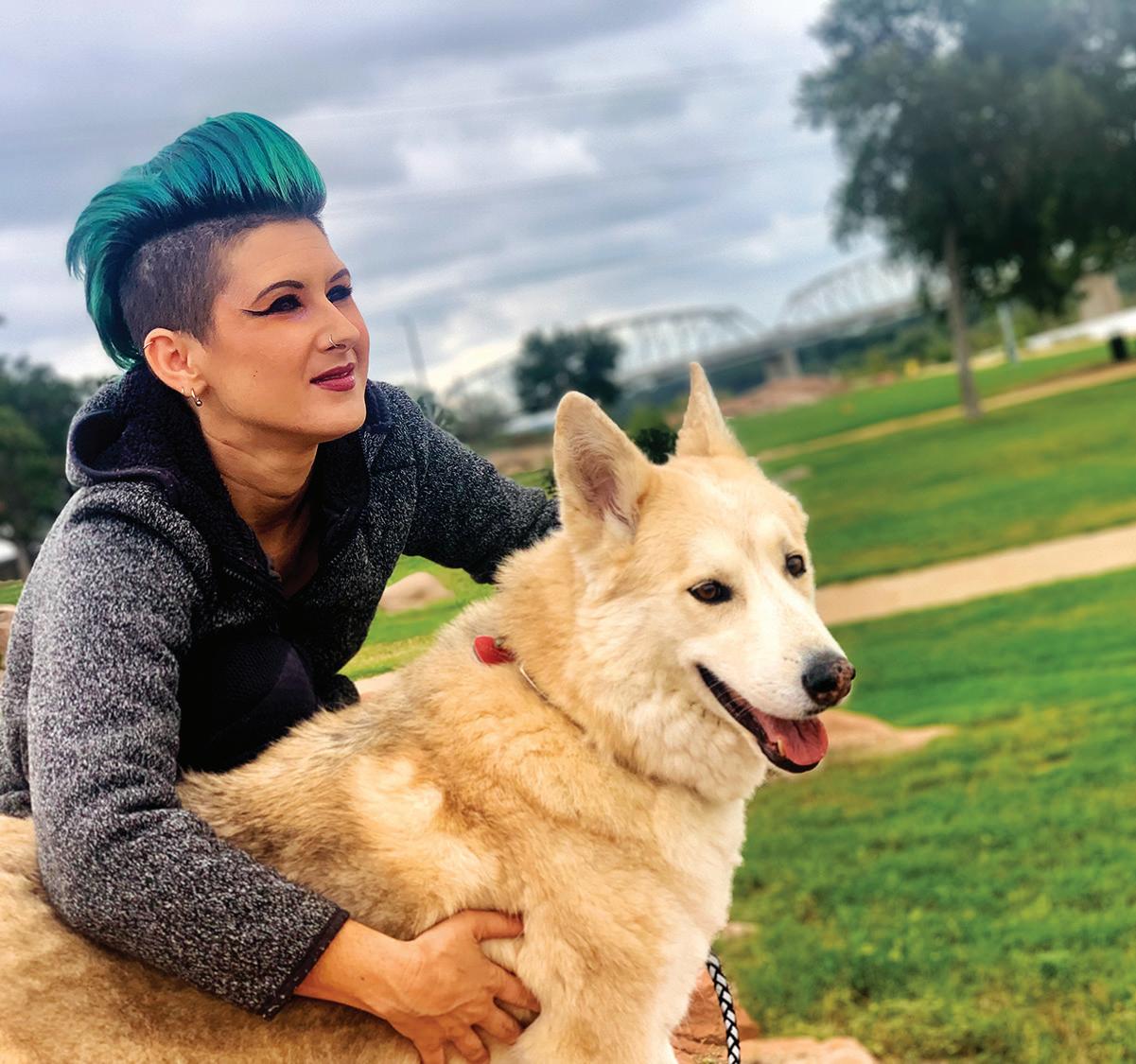
Lyric Rivera (they/them) is an Autistic self-advocate from Texas who runs the neurodiversity lifestyle blog Neurodivergent Rebel. They are also the founder of NeuroDivergent Consulting Lyric is known as the pioneer of the #AskingAutistics hashtag, where simple questions prompt openended responses that Autistic people can easily chime in with, and invites participants to engage each other in conversations related to the topic. This hashtag connects NeuroDiverse people who would not otherwise have a reason to engage with each other and fosters a collective understanding of the Autistic experience. www.NeurodivergentRebel.com


By Anson Service, Psy.D., LMHC, aka, the Neurodivergent Doctor
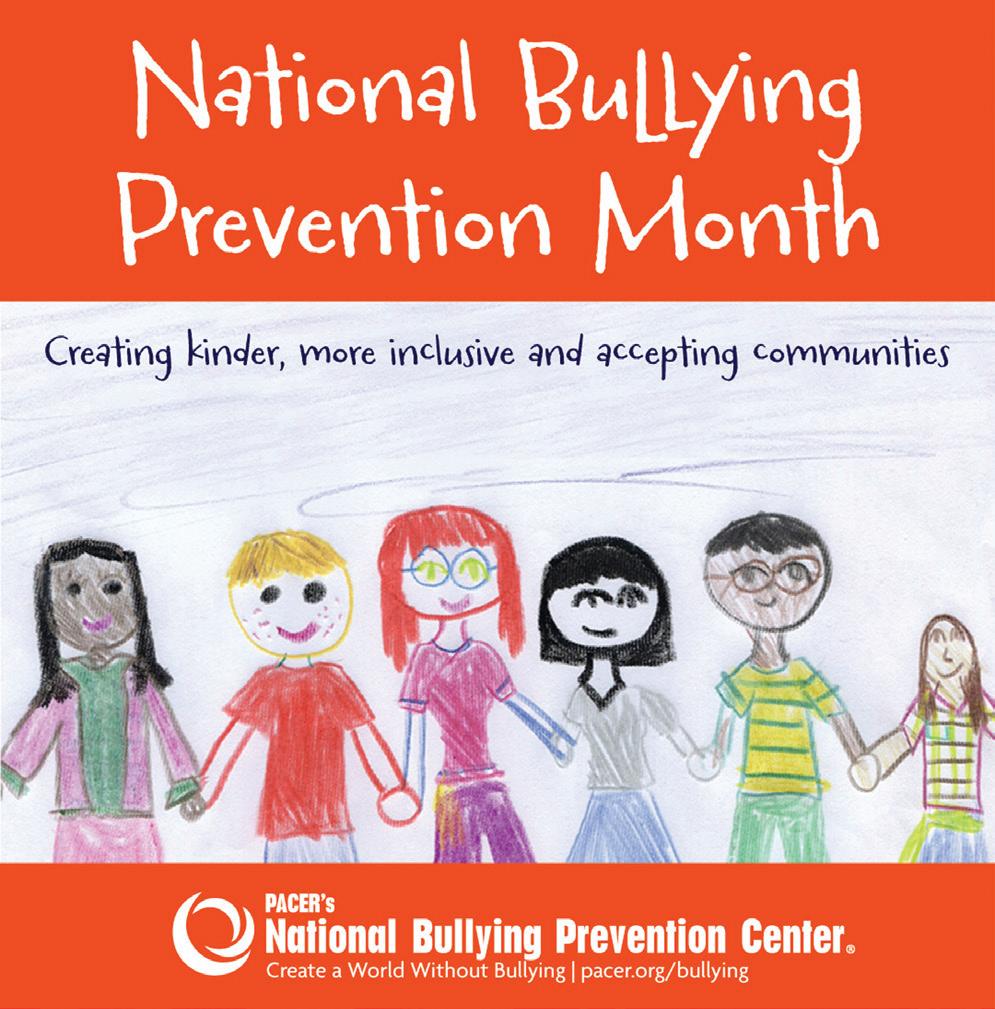
October holds a special dual significance: it is both National Bullying Prevention Month and National Disability Employment Awareness Month (NDEAM). These observances remind us of the urgent need to confront bullying at every age and in every setting, while also uplifting and supporting people with disabilities and neurodivergent individuals in school, work, and community life.
I remember being bullied, pretty much throughout my entire life in one way or another. I’m in the Generation X grouping, and bullying, according to what I would imagine is most of our Gen X group, was sometimes just considered “part of life”; something almost every kid experienced and experienced often.
If it wasn’t other kids around our age bullying us, it was adults, or teachers, or church leaders, or even people who were tasked with protecting us, like police.
It is sad that when I grew up in the 70s, 80s, and 90s, bullying was not only not surprising, but it was considered a galvanizing experience or “rite of passage” into adulthood. Well, now we know and understand that bullying is never “just part of growing up.”
I also often hear Gen Xers say, “I was bullied all the time, and I turned out just fine”. Unfortunately, they did not turn out “just fine”. I, along with many millions of others in my generation, am still reeling from the effects of childhood trauma due to bullying.
For children and adults, especially those who are autistic, have ADHD, have learning and developmental differences, or other disabilities, bullying can leave lasting scars, some of which may never be dealt with properly. But it doesn’t have to be this way. We actually do have some control over this harmful, sometimes deadly pattern of behavior.
I have heard it said that we fear what we do not understand, and people tend to be aggressive toward things or people they fear. There is still an epidemic of people who do not understand neurodivergent individuals.
With awareness, strategies, and community support, we can break these cycles and foster environments where differences are understood, respected, and celebrated. What I am saying is that bullying can stop, and it can stop now.
In elementary school, teasing and exclusion are often the first forms of bullying children encounter. Children are still developing social skills, and it is expected that there are differences in speech, movement, or behavior. However, when these differences are more pronounced, it can sometimes make neurodivergent kids targets.
What parents can do:
• Name it early: Teach your child what bullying looks like. It can be both repeated hurtful behavior or one-time disagreements. It can be overt or covert.
Teach your children what all forms of bullying might look like, not only to protect themselves, but also to ensure they do not inadvertently participate in bullying others.
• Build empathy: Role-play scenarios about kindness and inclusion. Reinforce that “different isn’t bad, it’s just different.”
• Partner with schools: Request proactive anti-bullying measures, especially for kids with Individualized Education Programs (IEPs) or 504 Plans.

You can even reach out to Autism Empowerment or Spectrum Life Magazine and ask for me or another speaker to come to your school to help train educators about what the various forms of neurodivergence look like and how to make sure everyone feels welcome and safe.
Unfortunately, I have heard many educators tell me things that illustrated that they simply did not understand many forms of neurodivergence.

• Model boundaries: Show children that it’s okay to say, “Stop, I don’t like that,” and that adults are there to help.
I believe adults do a much better job at dealing with bullying now compared to 40 years ago, when the reaction from teachers was to ignore it or tell a kid to just go back to their desk and stop complaining.
When children learn empathy and boundaries early, they’re less likely to engage in bullying and more likely to speak up if they see it.
Let’s make it such an “uncool” thing that it dies out now.
2) Autistic Teens and Adults: Safe Spaces in Schools, Clubs, and Workplaces
Bullying doesn’t end in childhood. For teens and adults, especially the neurodivergent or disabled, bullying can be sneakier, more subtle, but equally harmful.
This might look like mocking speech patterns, excluding them from groups, clubs, or social events, or undermining them online. In adulthood, it can take the form of harassment, dismissive supervisors, or social exclusion in community settings.
Why neurodivergent people are more vulnerable:
Differences in social communication can make neurodivergent individuals easier targets for bullying, while the pressure to “mask” their natural traits in order to fit in often leads to chronic stress and exhaustion.
At the same time, many workplaces and schools claim to value inclusion, but in practice, they sometimes fall short, failing to create environments where differences are genuinely respected and supported.
Strategies for support:
• In schools/colleges: Encourage peer allies, disability awareness events, and sensory-friendly spaces. Self-advocacy clubs can be powerful tools as well, especially for those who have a history of being bullied.
• In workplaces: Employers should have zero-tolerance bullying policies, clear reporting systems, and training in disability inclusion.
October’s Disability Employment Awareness Month is the perfect time to highlight that inclusive workplaces reduce bullying and increase retention.
An unfortunate reality for many is that their Human Resources departments are goal-oriented to help the company stay out of trouble, rather than really helping victims of bullying. Sometimes, seeking help outside of work resources is needed, even seeking legal help from professionals.
• For individuals: Know your rights. In the U.S., the Americans with Disabilities Act (ADA) protects against harassment and discrimination in the workplace and in education.
Counseling, support groups, and mentorship can provide strength and perspective. Sometimes, a mental health professional may help you navigate through difficult bullying situations and help identify resources to help.
Cyberbullying affects children, teens, and adults alike. It takes many forms, such as harassing comments, exclusion from group chats, impersonation, or coordinated online attacks.
For neurodivergent individuals, online communities can be both lifelines of support and sources of harm. Unfortunately, as an adult and a YouTuber, I have been the target of unspeakable bullying online. None of us are safe from cyberbullying.
Protective steps:
• For children: Keep open communication. Instead of constant monitoring, teach digital citizenship: kindness online, not sharing passwords, and coming to adults when something feels wrong.
• For teens: Insist on the use of privacy settings, blocking, and reporting tools. Validate their feelings when they’re targeted, and not if, but when they become the target of cyberbullying, remind them it’s not their fault and the effects are temporary. Teens have lost their lives due to cyberbullying and harassment.
Continued on next page
• For adults: Harassment in professional or advocacy spaces should be documented and reported. Seek support networks online that emphasize safety and moderation. Again, nobody is immune to this unless you simply are not online at all.
Even I was recently the target of cyberstalking just weeks ago by someone I have never met and have had absolutely no contact with ever before. Luckily, I was able to shut it down, hopefully, but I understand it will not be the last.
Cyberbullying can feel inescapable because it follows people into their homes. This makes compassion, validation, and strong support systems essential.
Remember: Bullying is not a reflection of the person being targeted. It reflects the unmet needs of the bully, and a lack of understanding and compassion. If you have been bullied, which you likely have, I am sorry. You did not deserve that.
• Parents: You are not alone. There are resources, counselors, and advocacy groups to help your child thrive.
• Teens and adults: Your voice matters. Whether through self-advocacy groups, supportive workplaces, or disability rights organizations, you deserve to be heard and respected.
• Communities and workplaces: Inclusion is not just empty words; it’s essential that it is understood, embraced, and practiced. Antibullying programs, disability awareness training, and policies with accountability can shift cultures for the better.
By standing together, we can create safe, affirming spaces where all people, especially neurodivergent individuals, can grow and contribute without fear of bullying.
October reminds us that the prevention and total elimination of bullying is possible, healing is real, and respect is non-negotiable.
To read other columns by Dr. Service, visit: www.SpectrumLife.org/neurodivergentdoctor
Check out his YouTube channel at www.youtube.com/@NeurodivergentDoctor

Dr. Anson Service is a licensed mental health counselor, and part of a team that assesses individuals for autism, ADHD, and more at Adventure Psychological Services. Dr. Service has written for various magazines and authored several books and is happy to further educate others on autism and other areas of neurodiversity. He and his wife have raised three young men and are now raising their dog, Luna. www.NeurodivergentDoctor.com
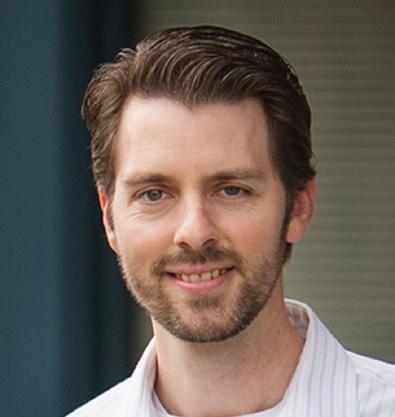

Spectrum Life Magazine uniquely showcases your business to youth, adults and families in the autism community. Our nonprofit is now accepting New Ads and Sponsorships

For business inquiries, email: SpectrumLife@AutismEmpowerment.org or call (360) 852-8369



